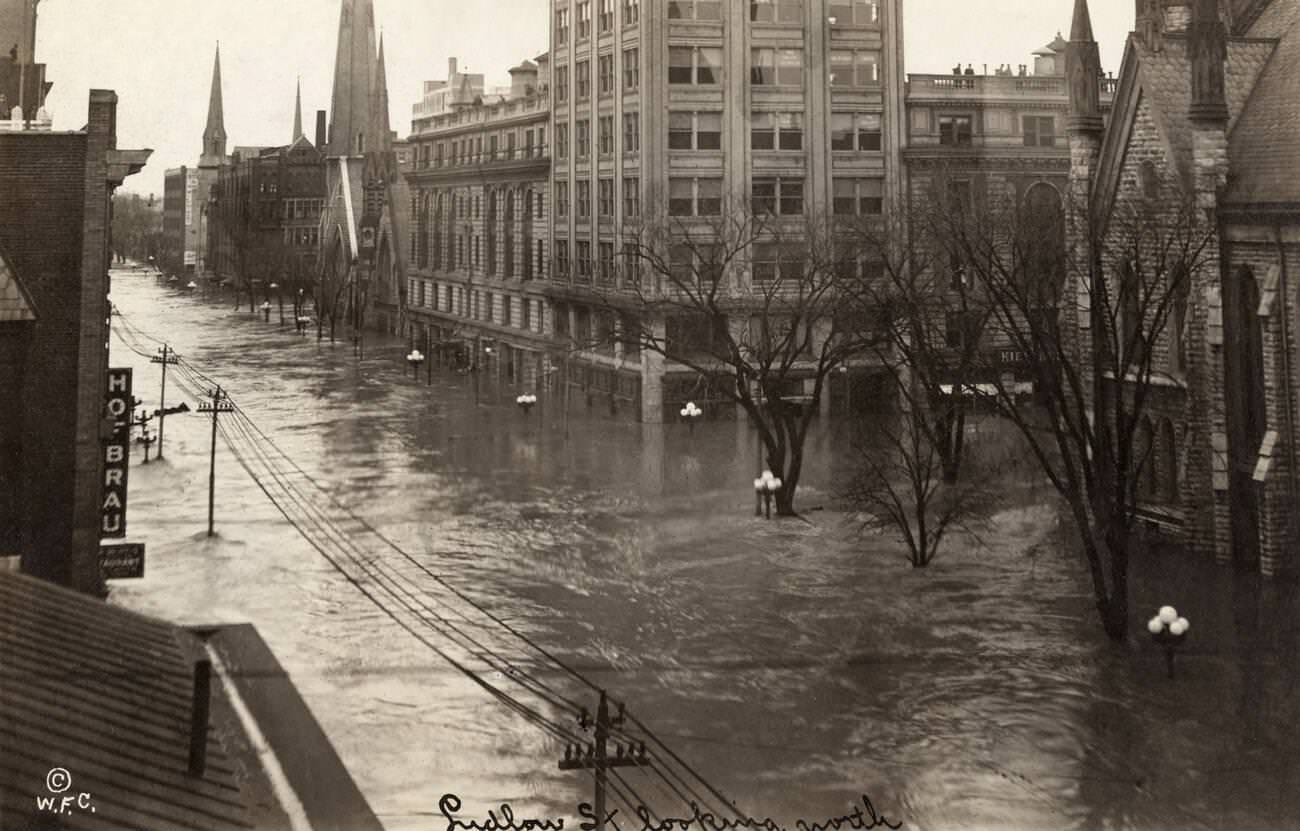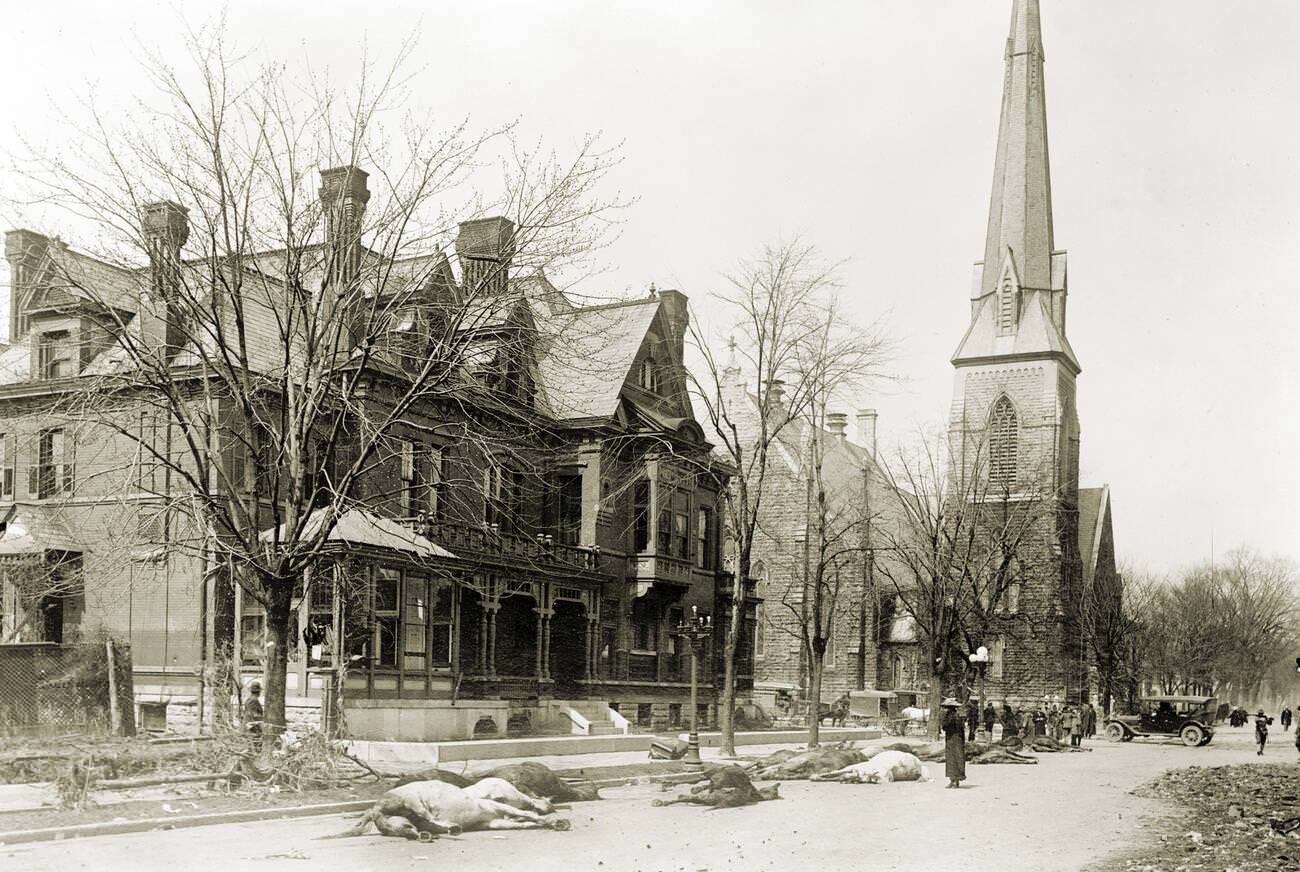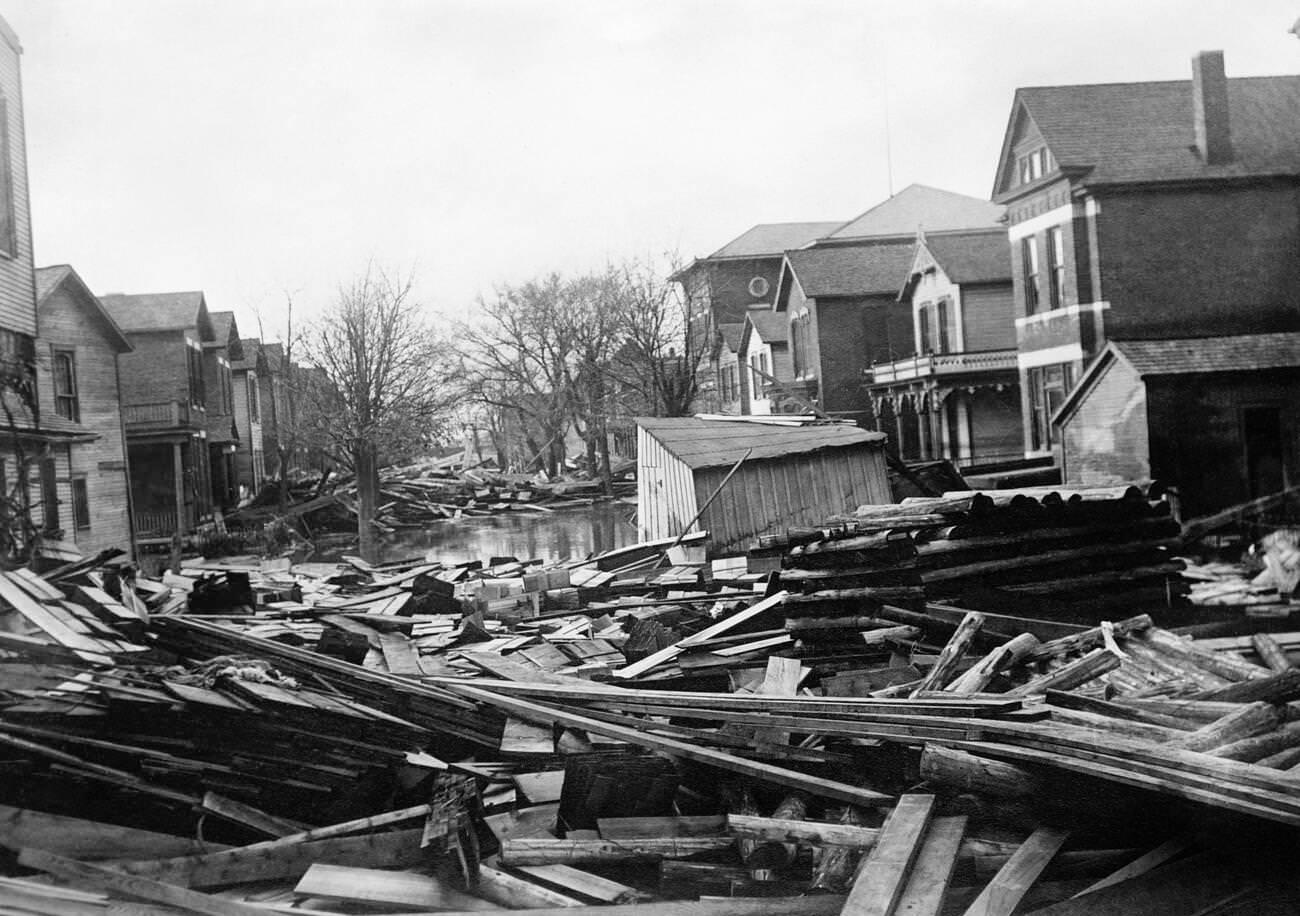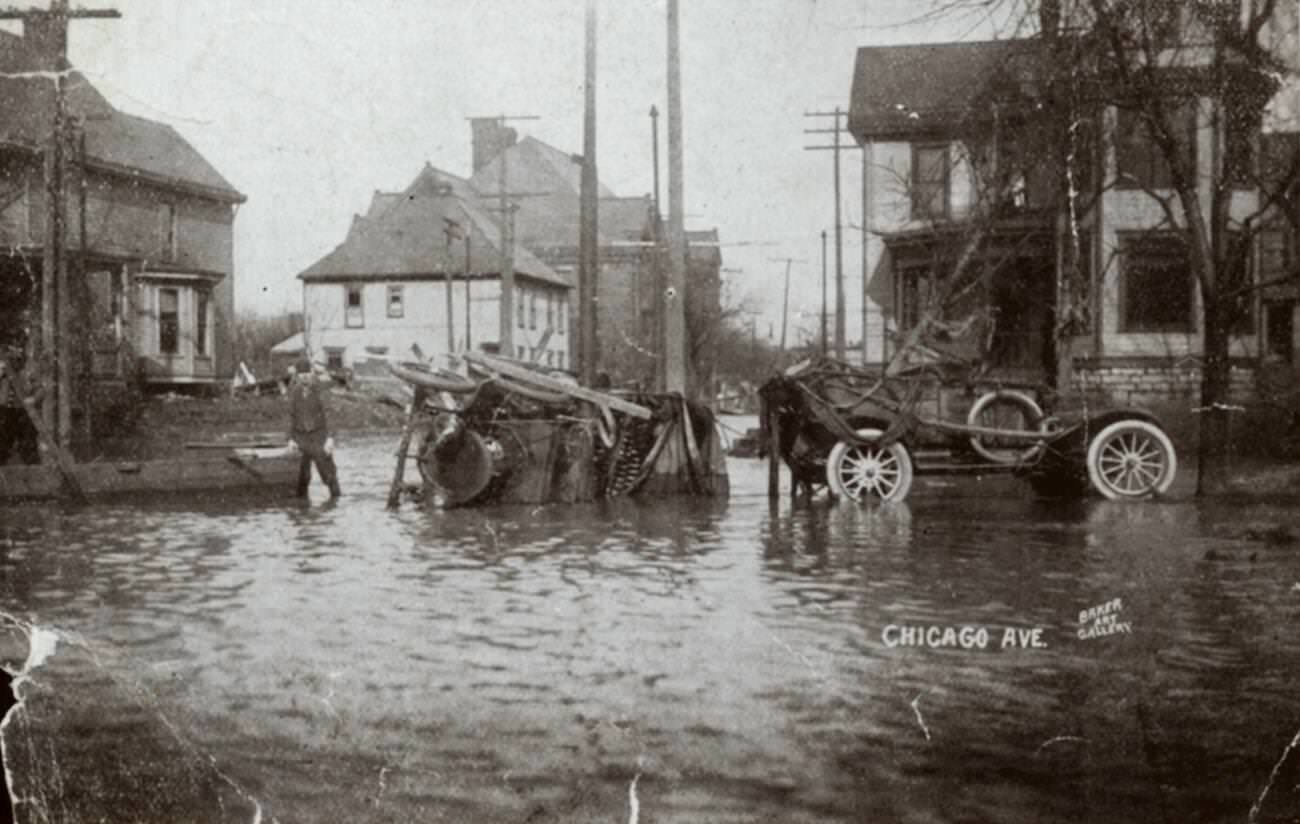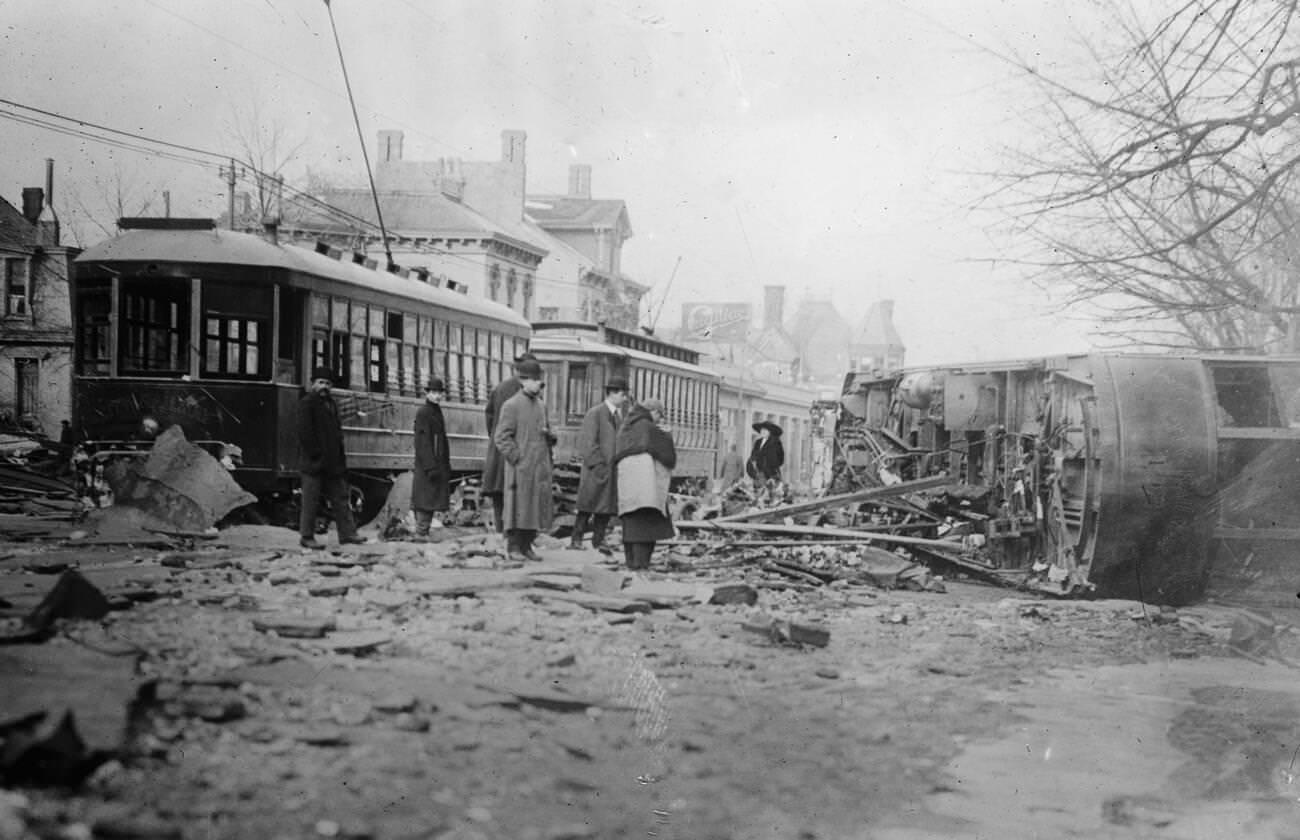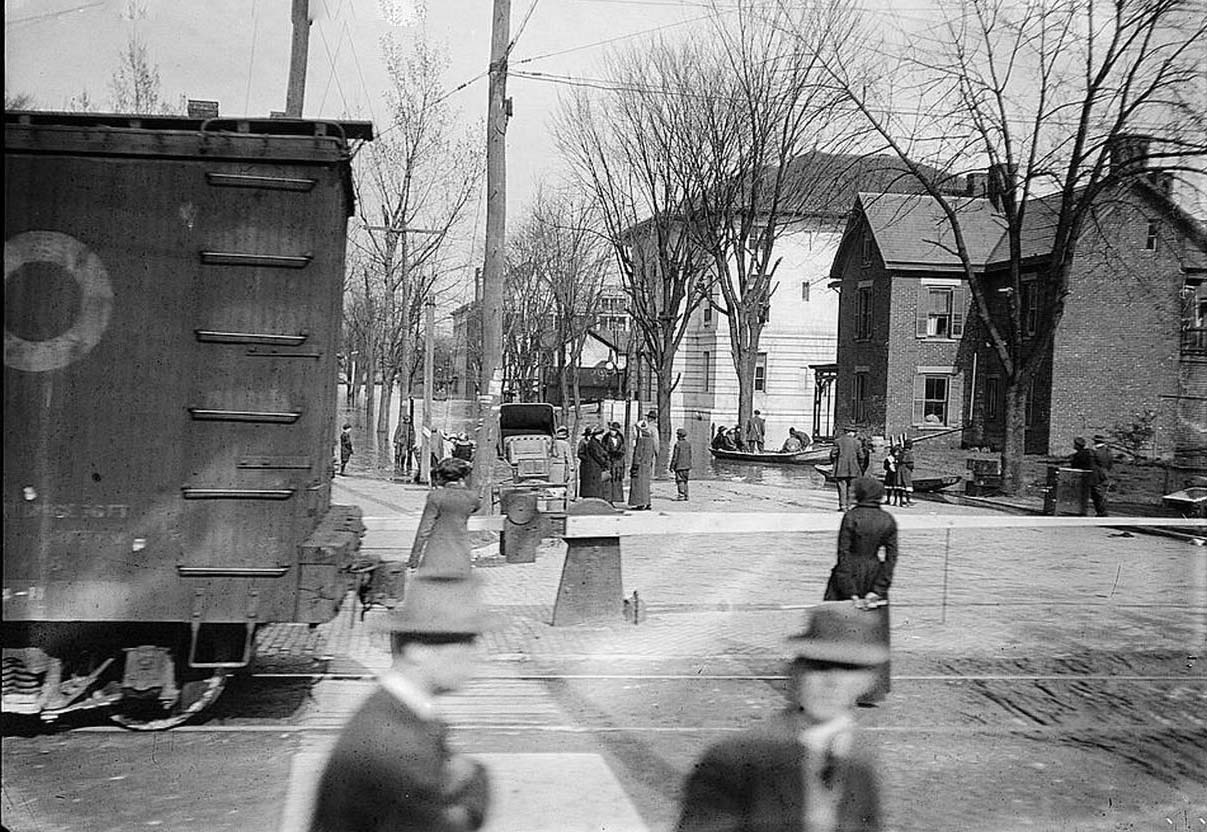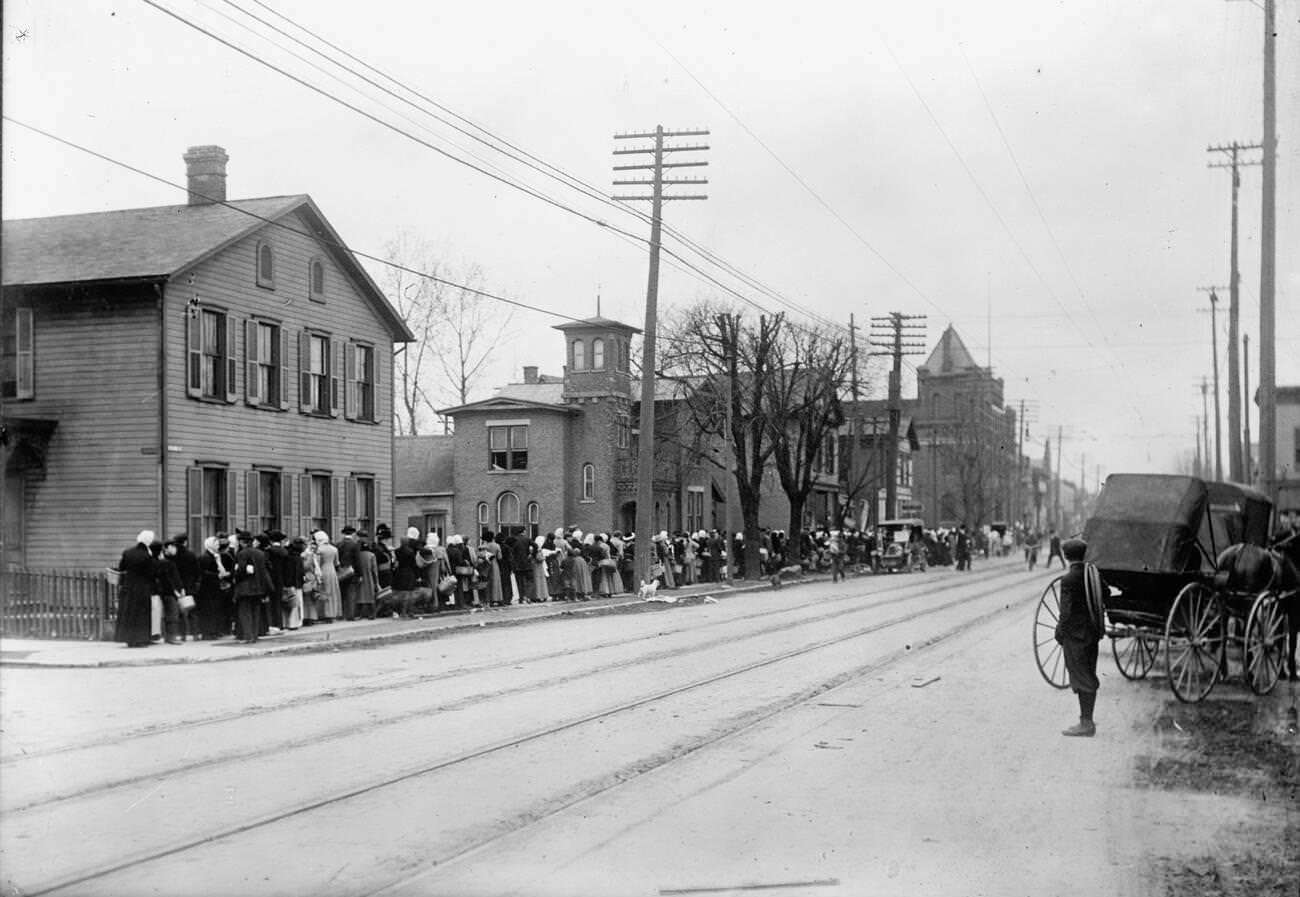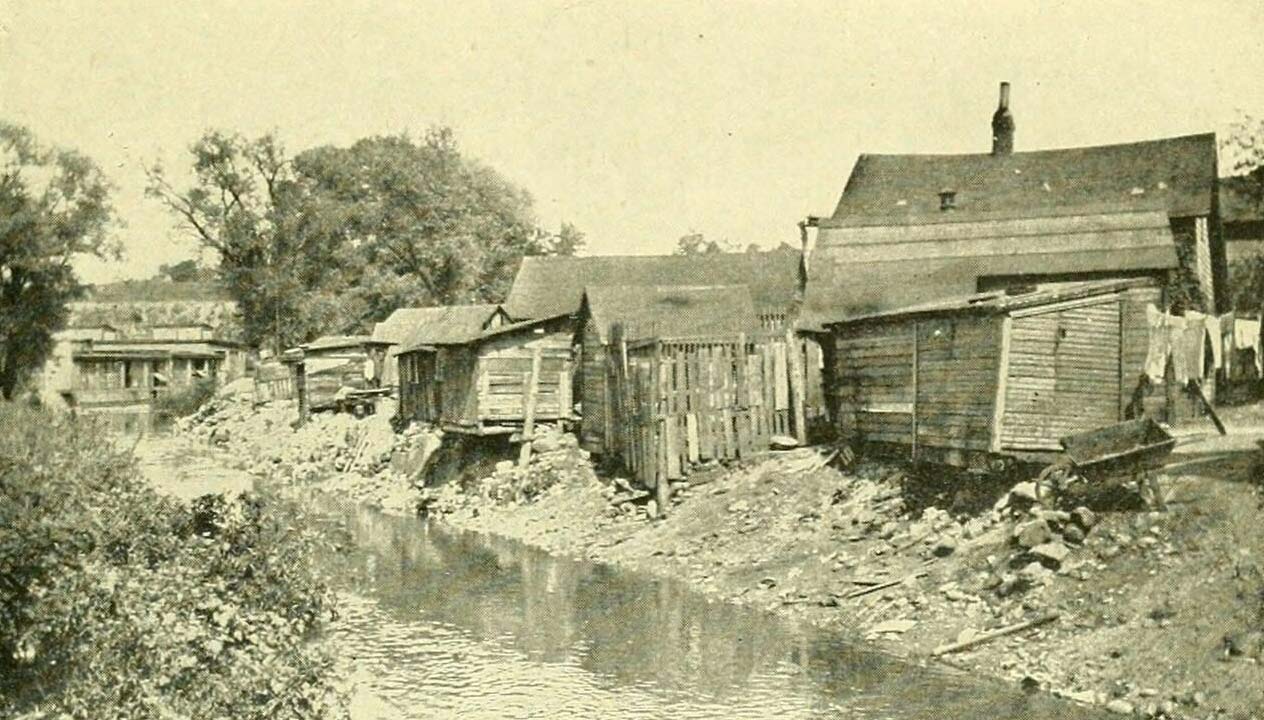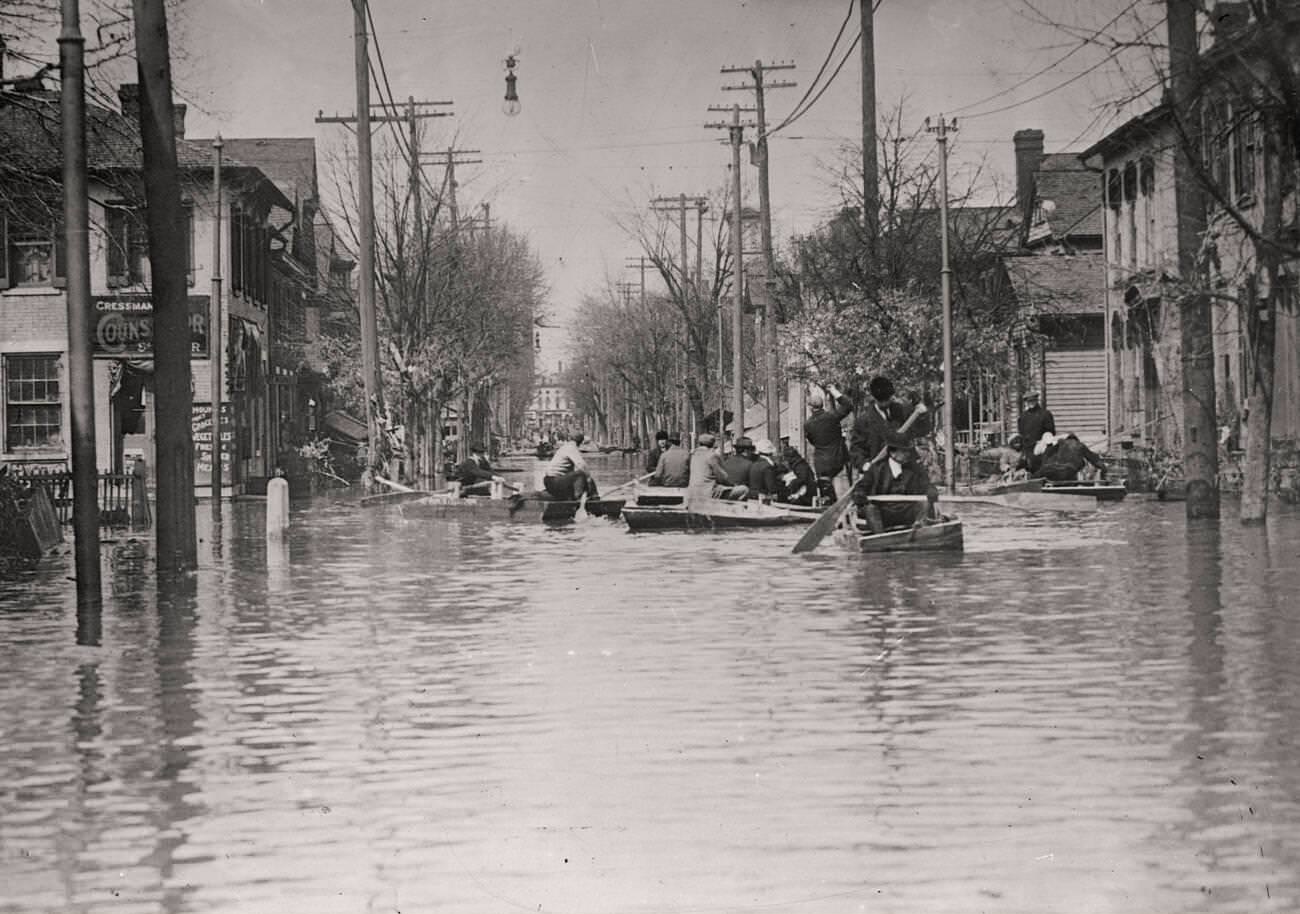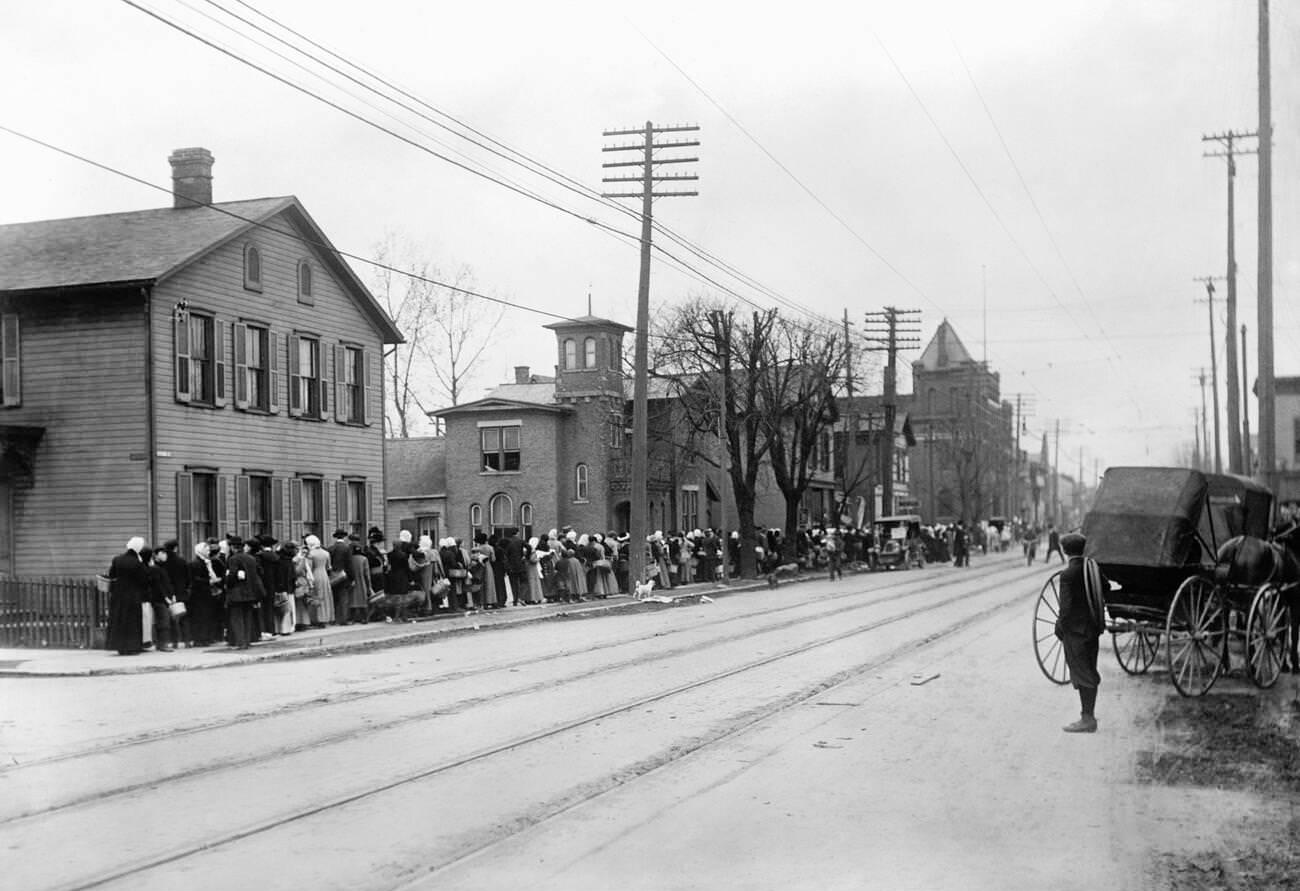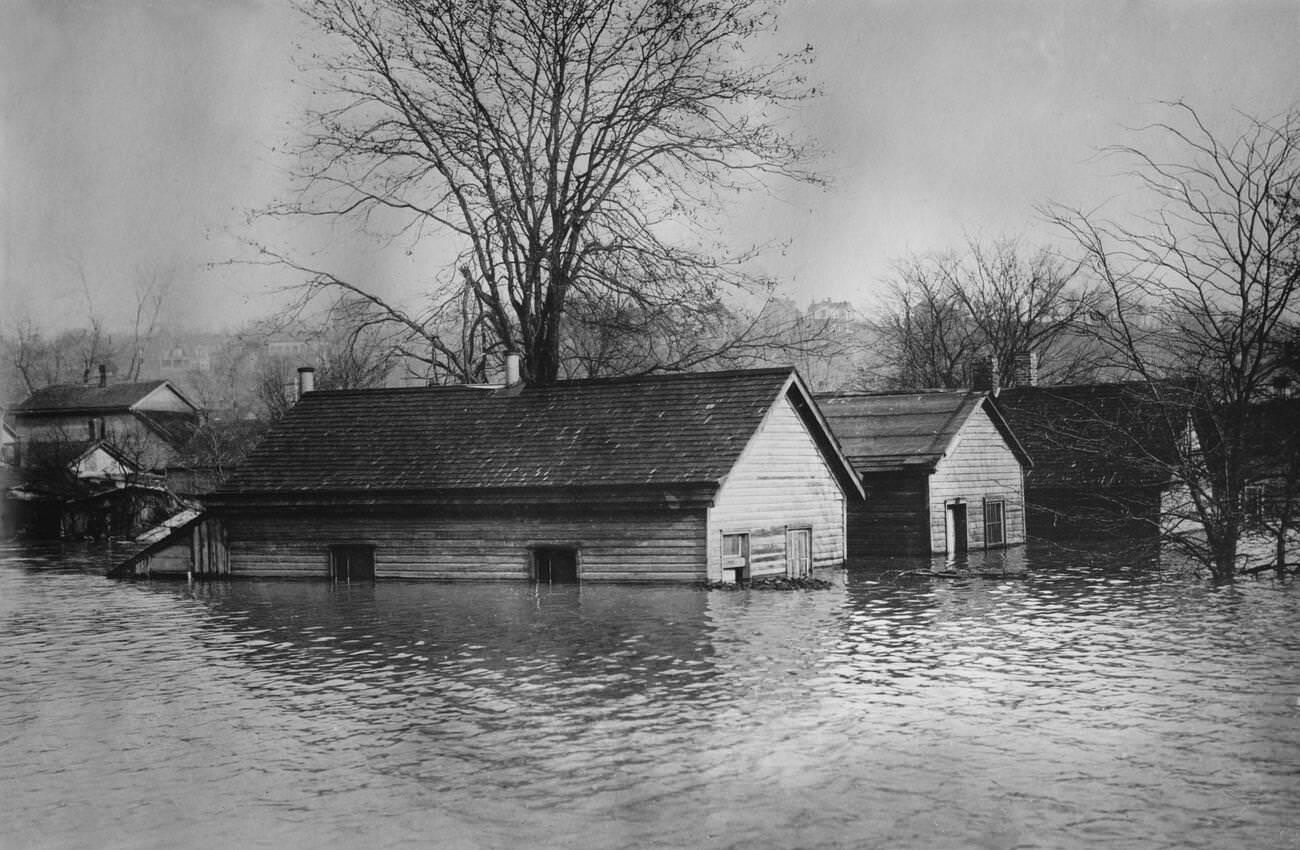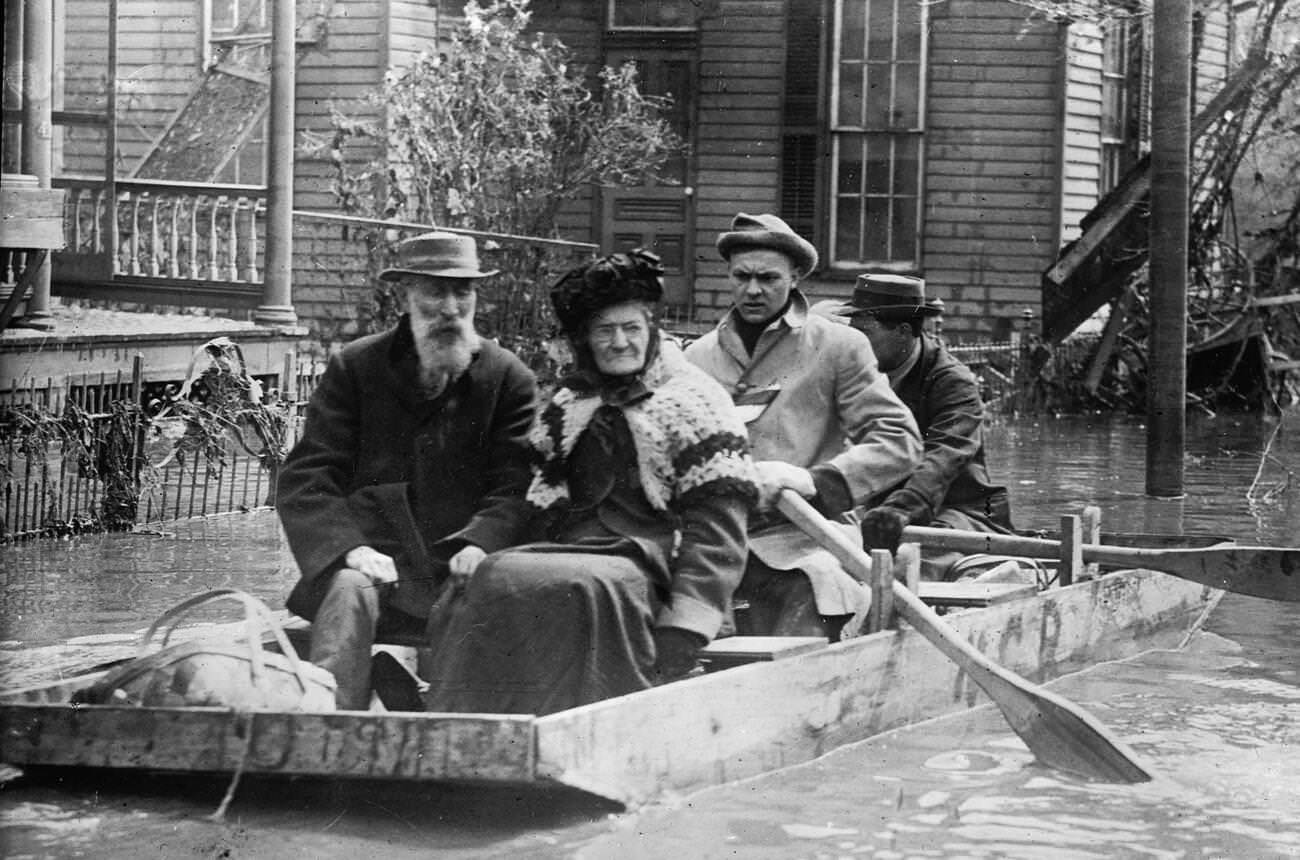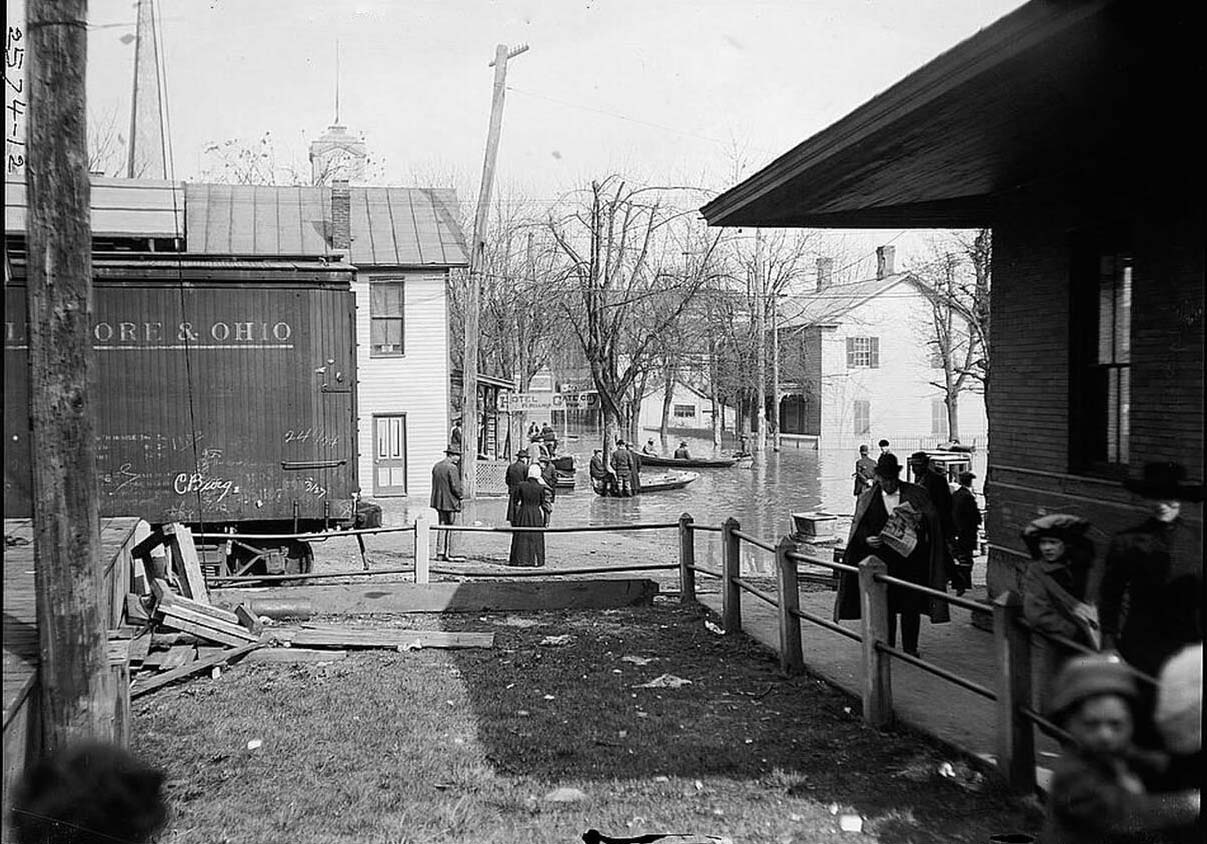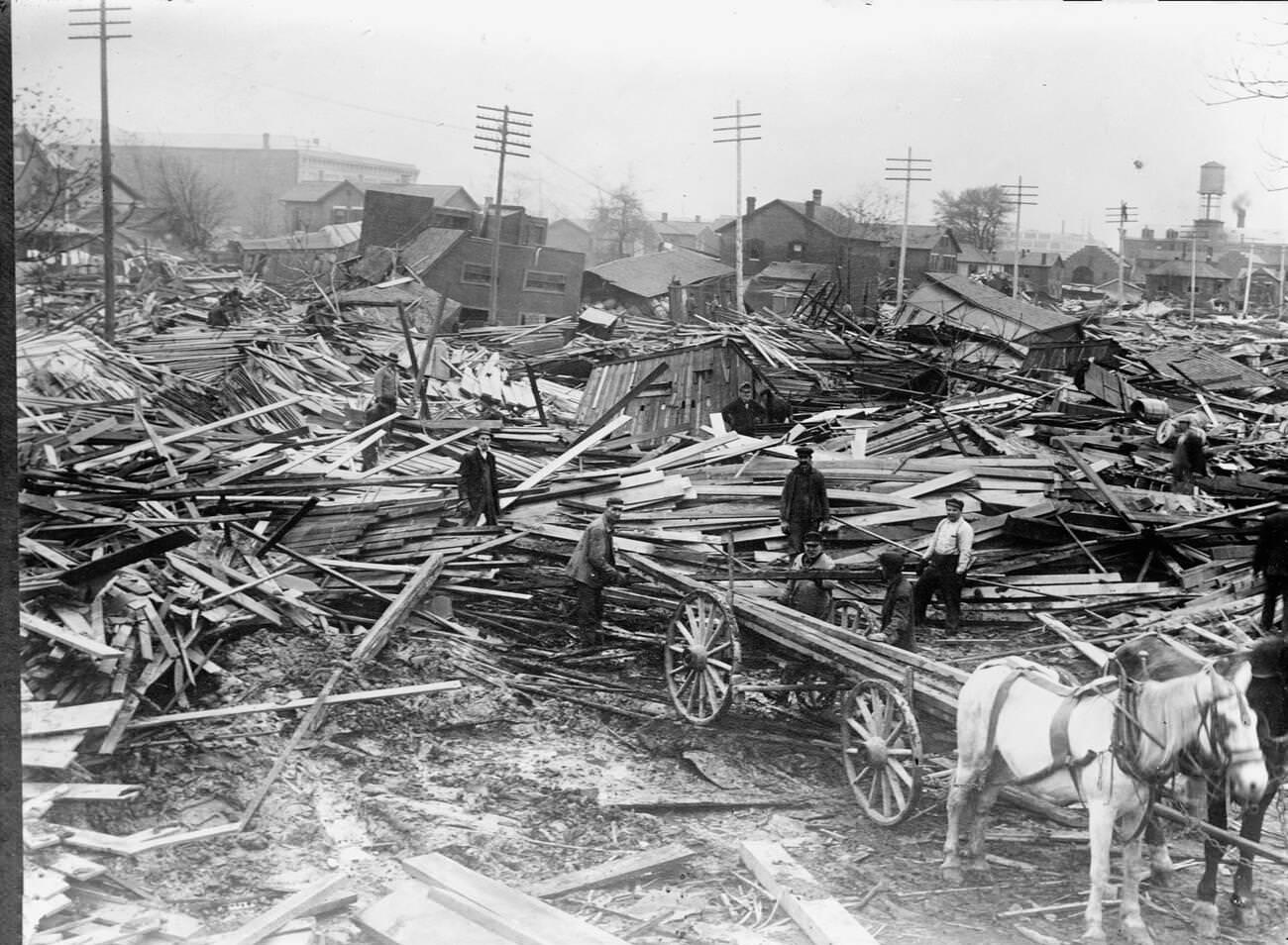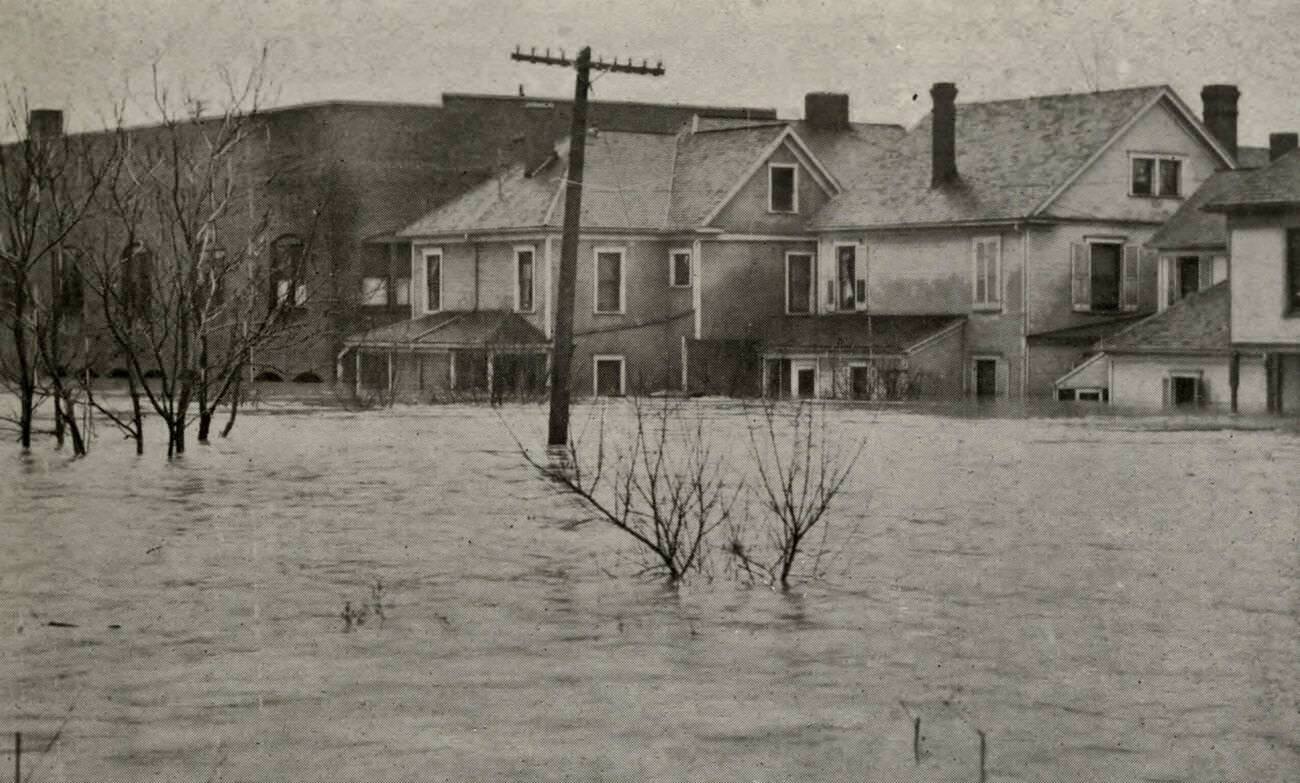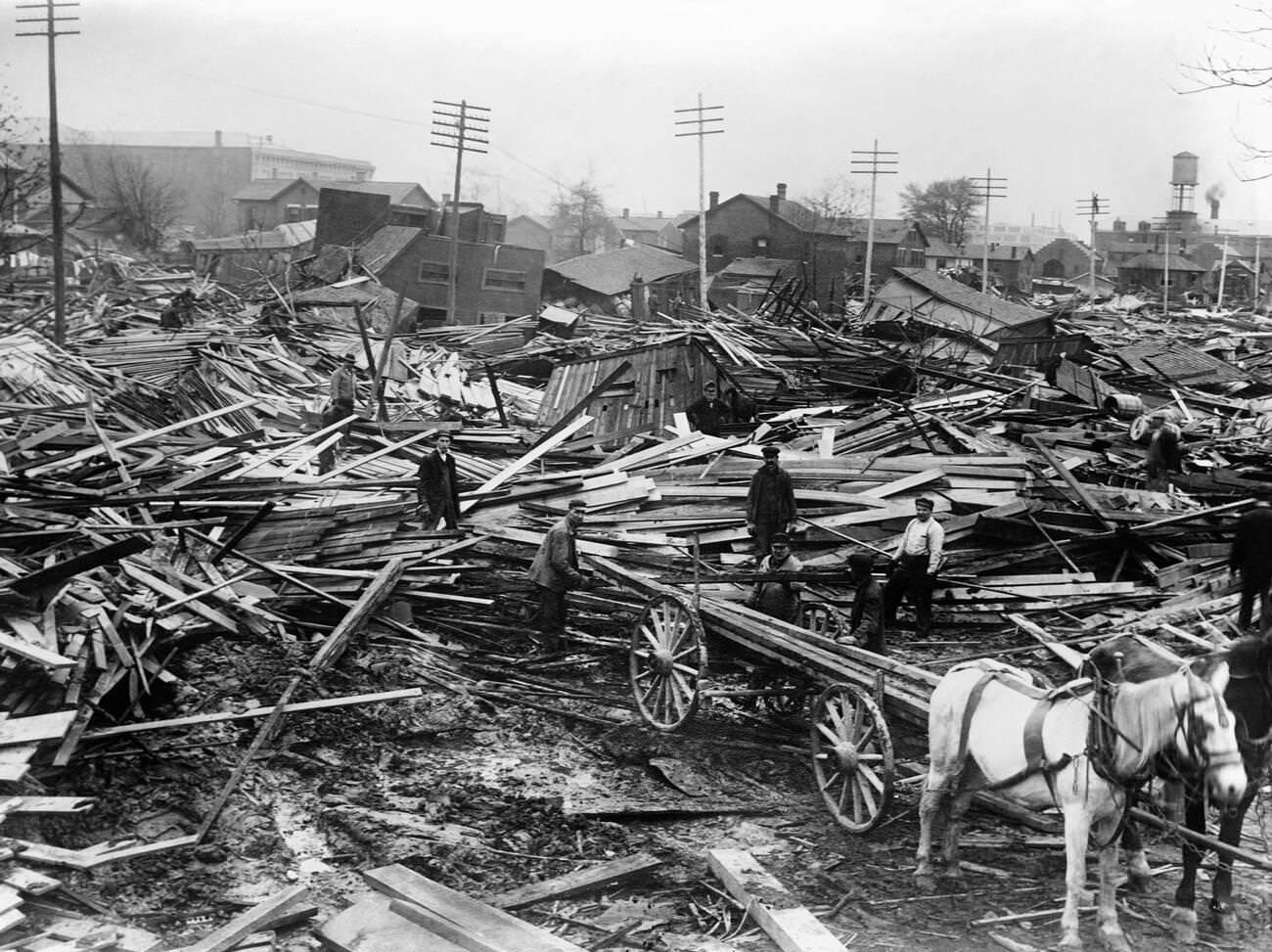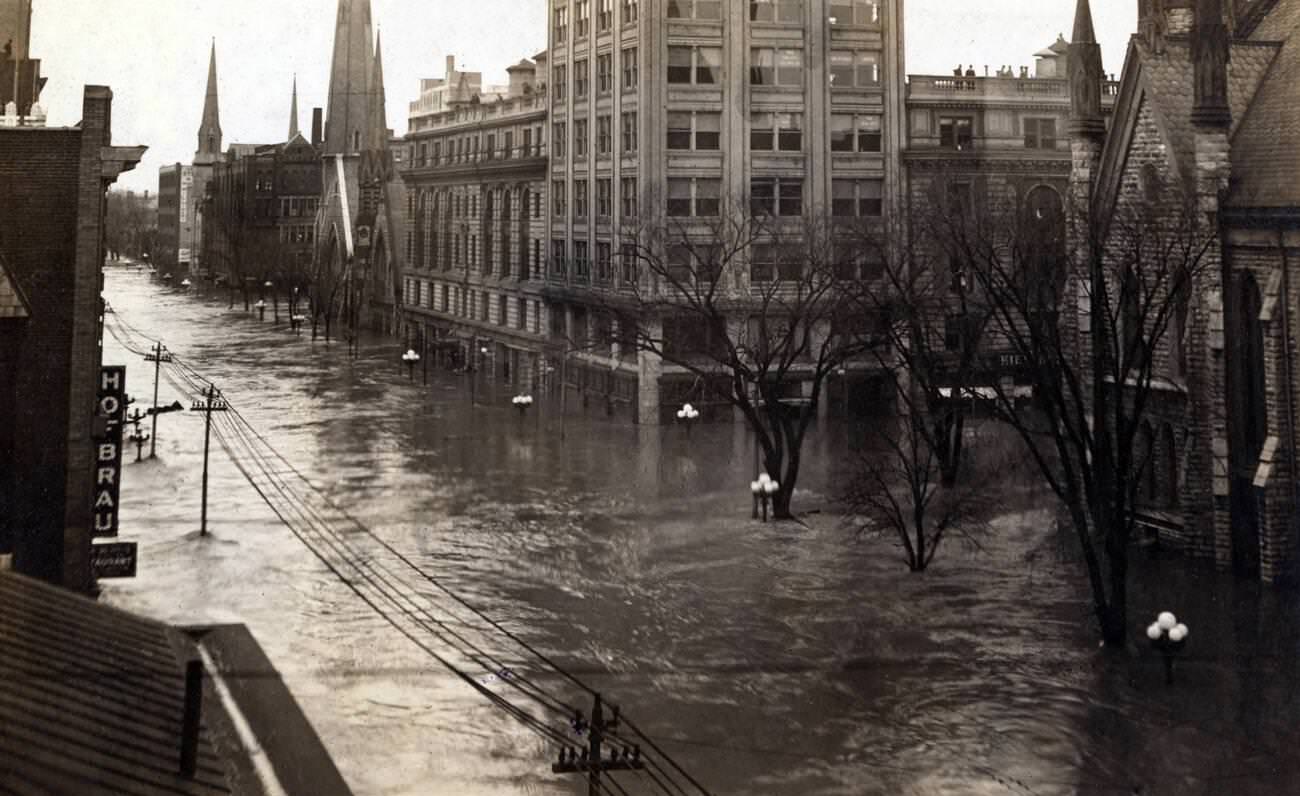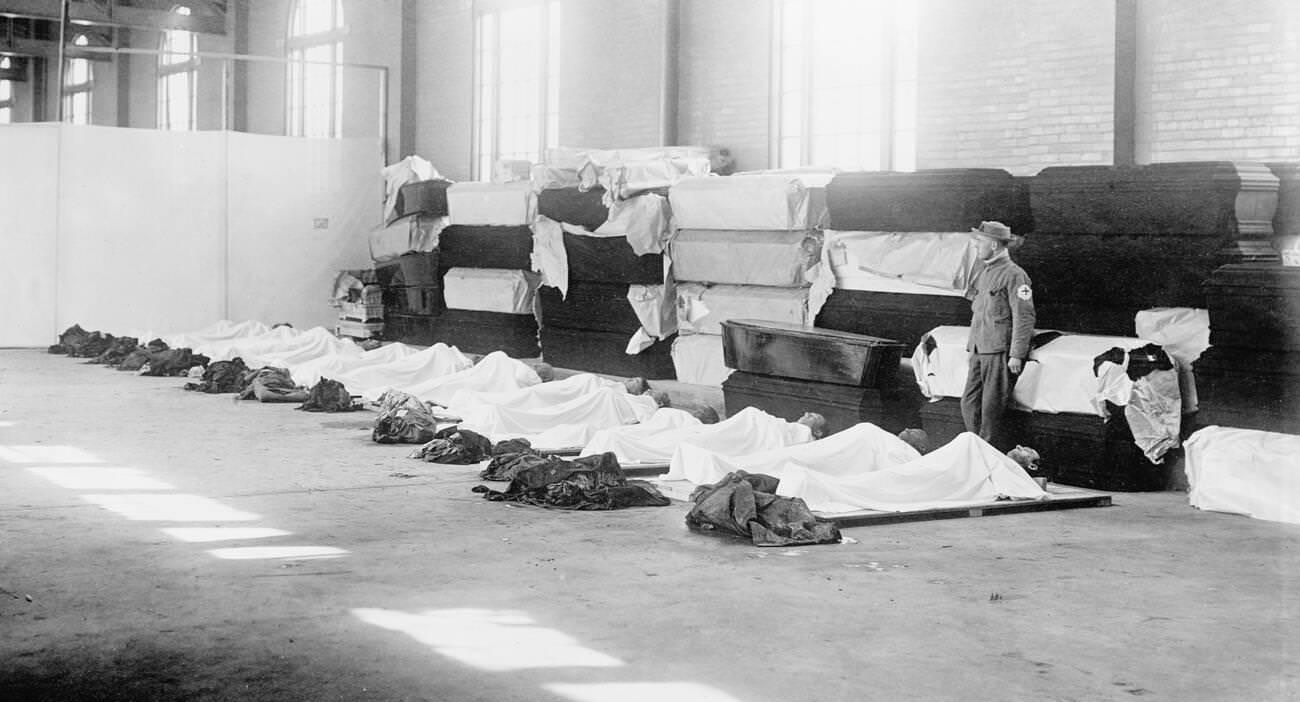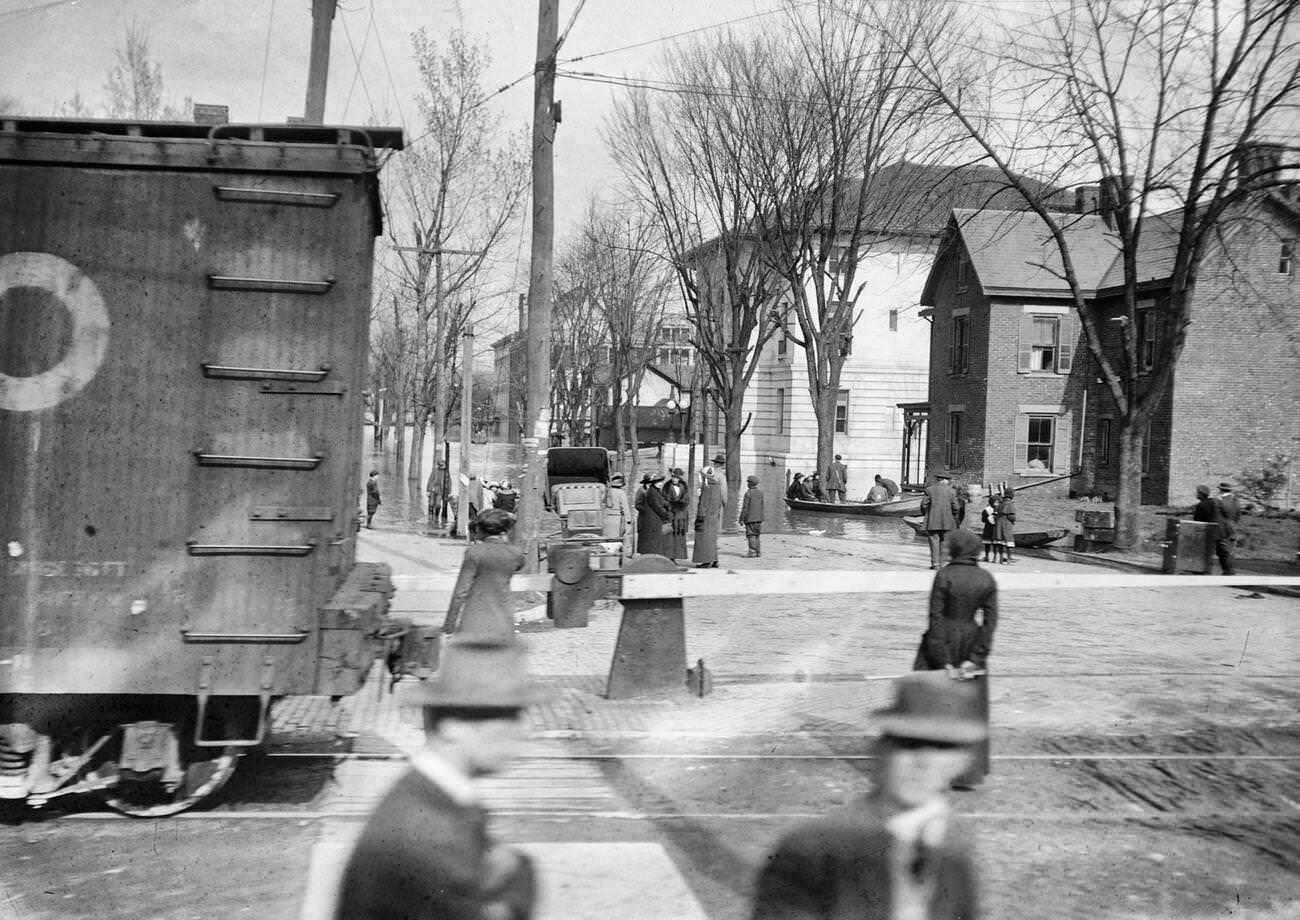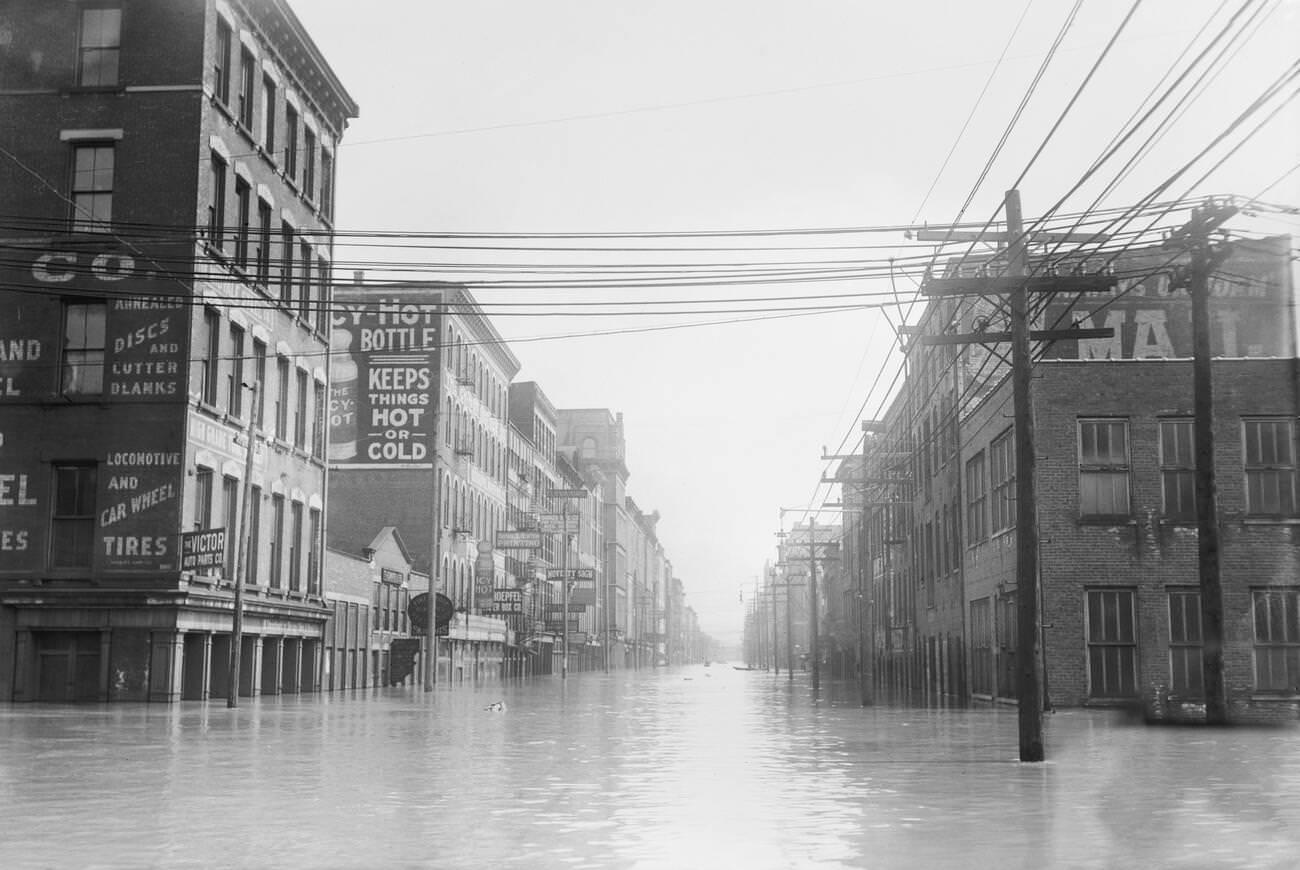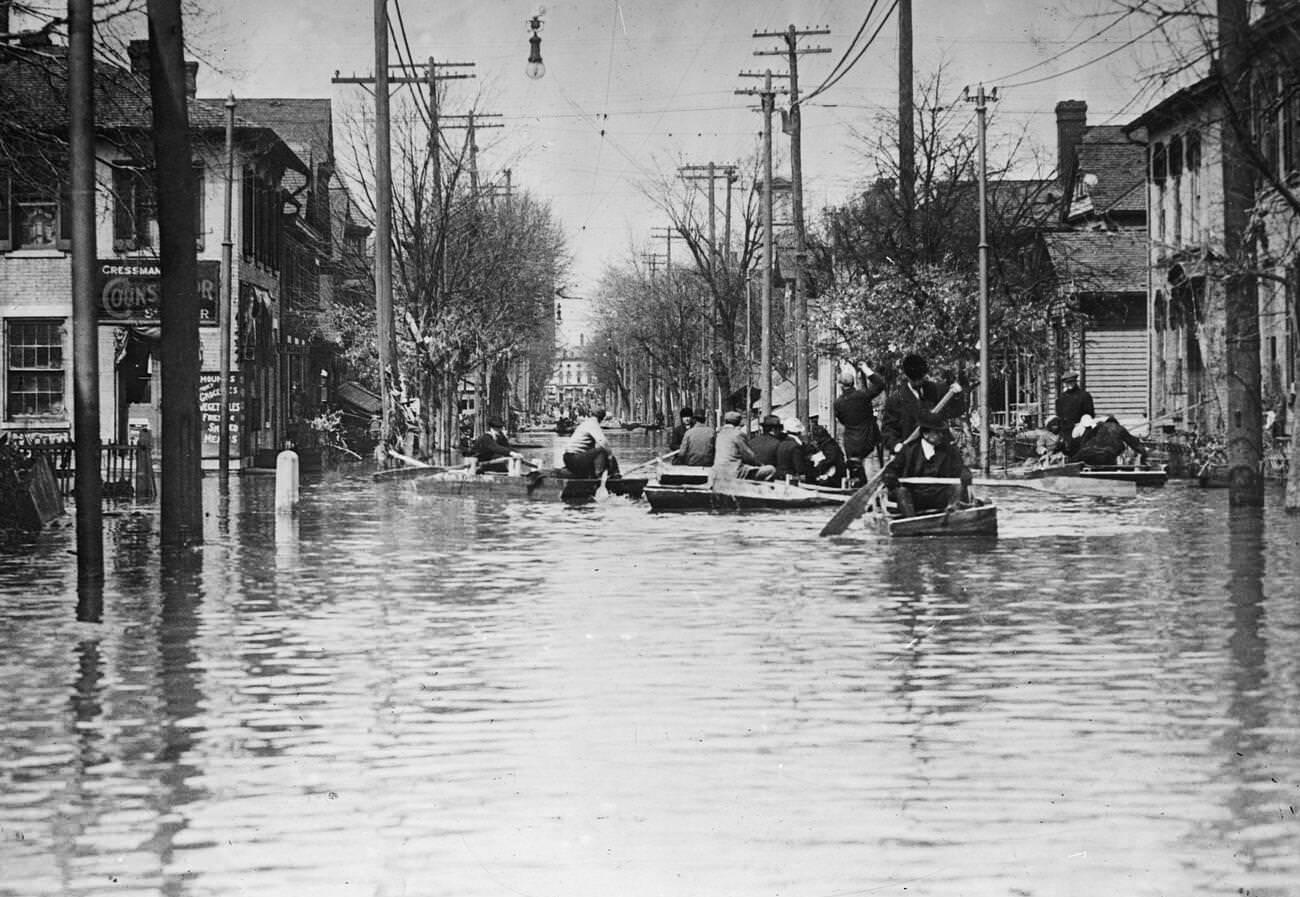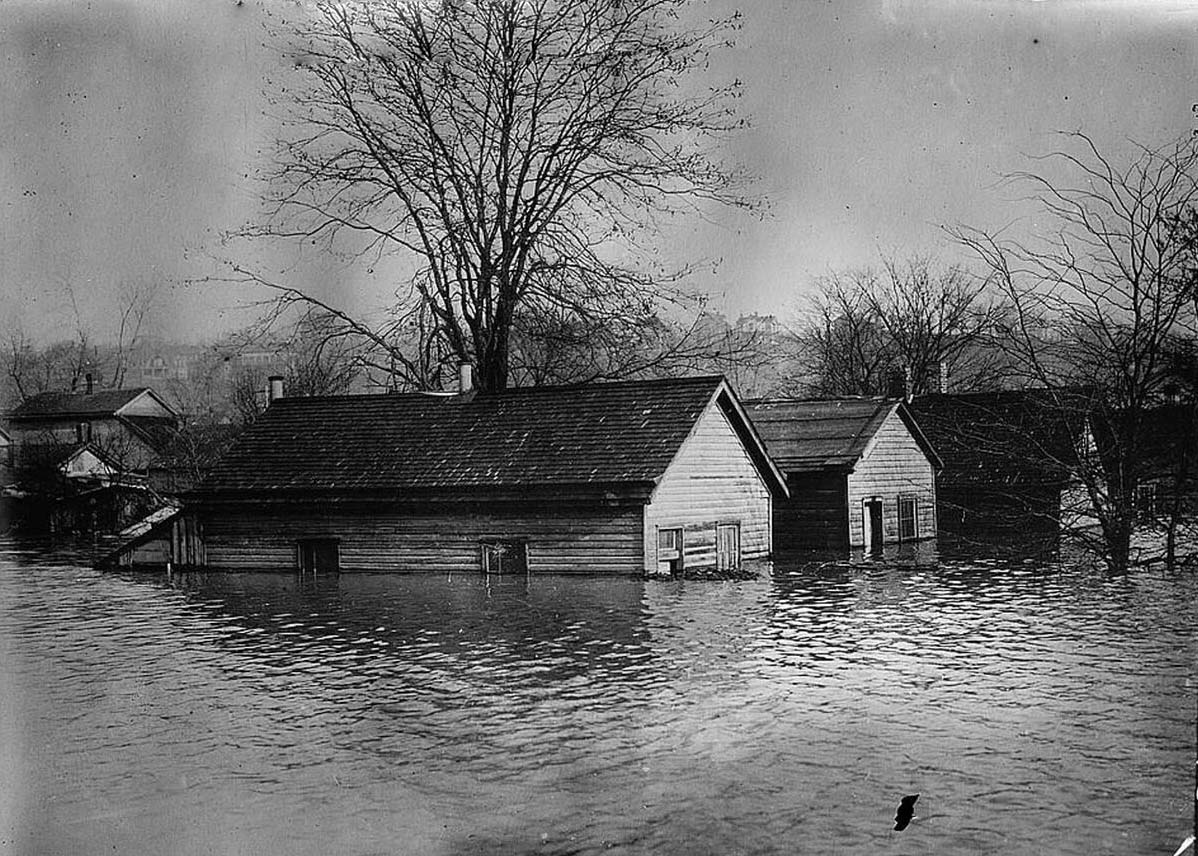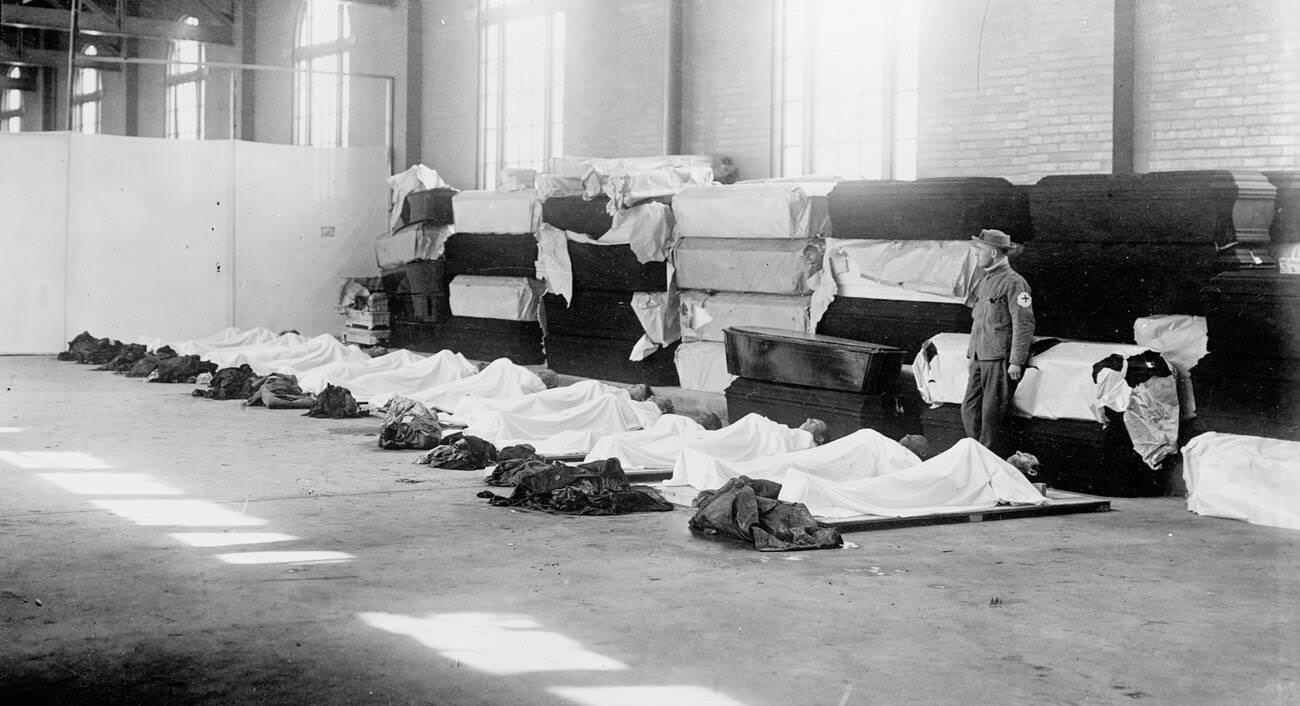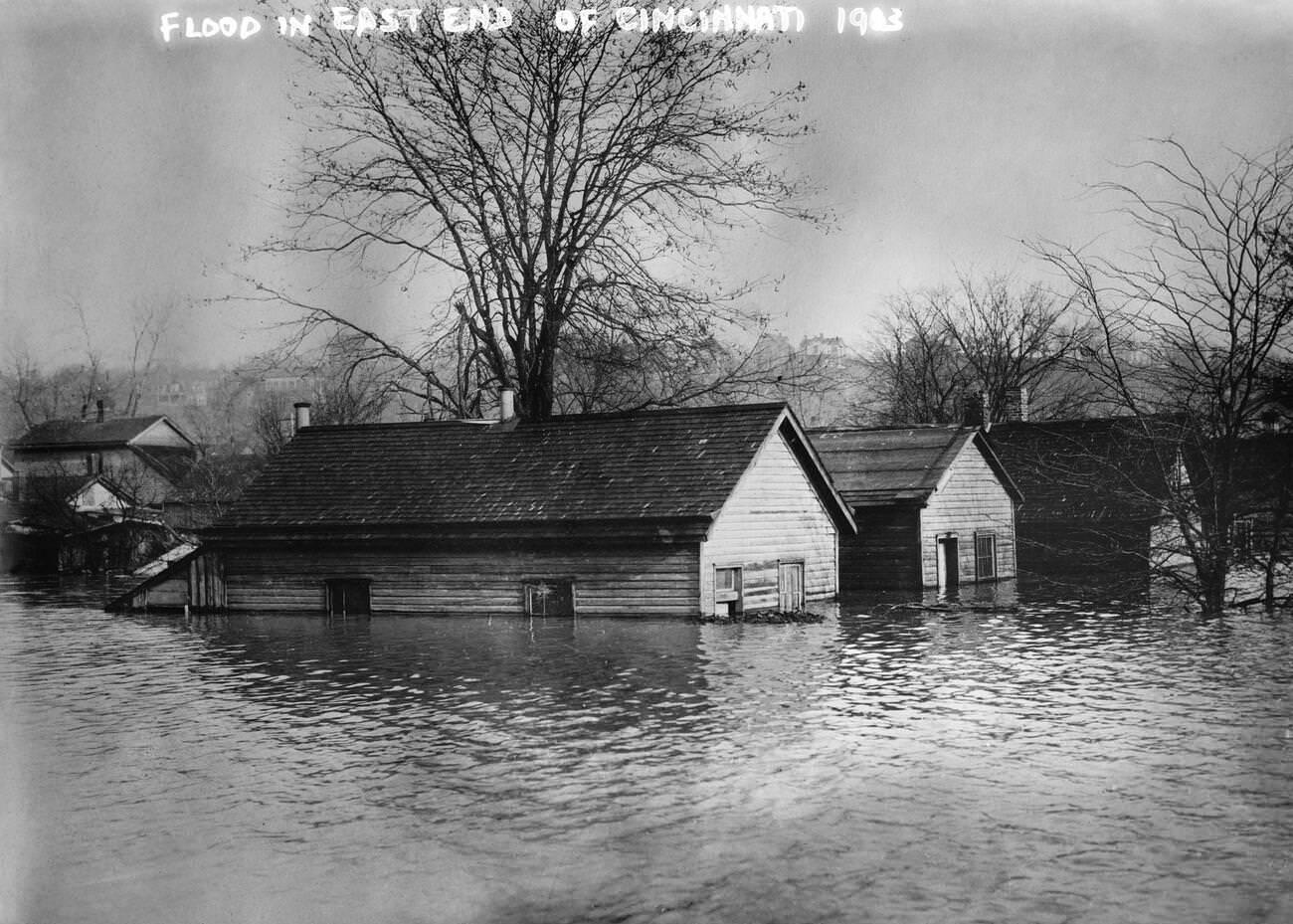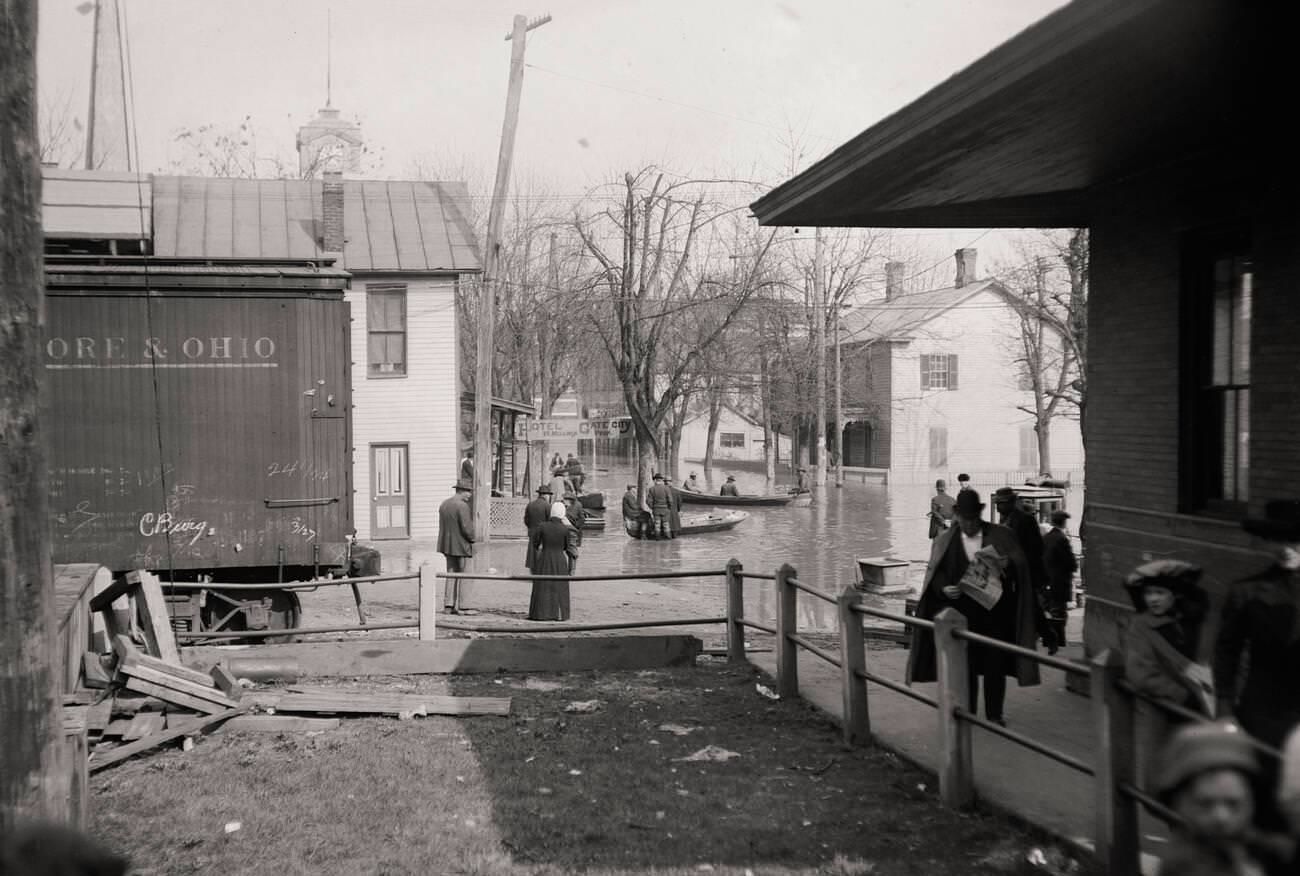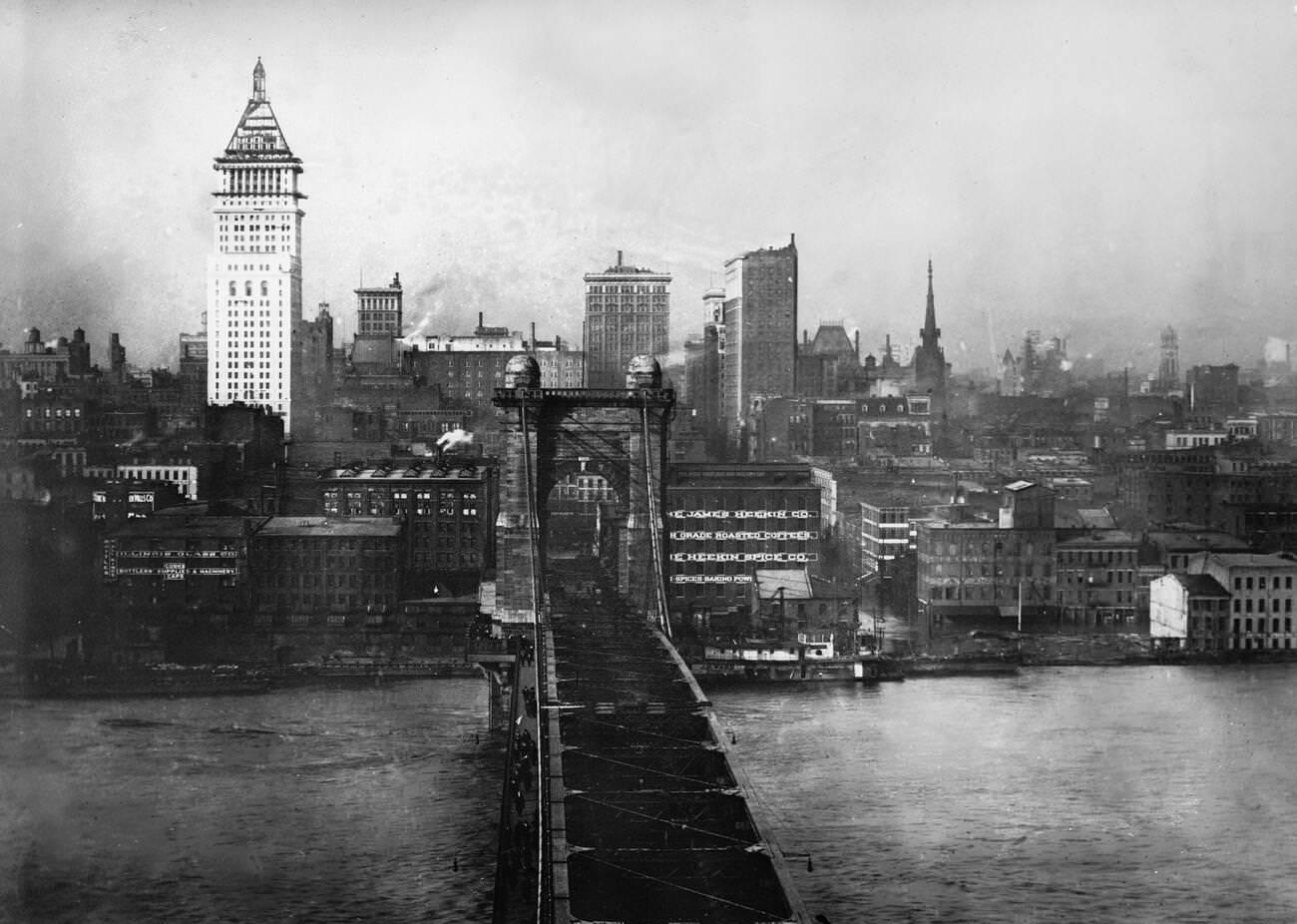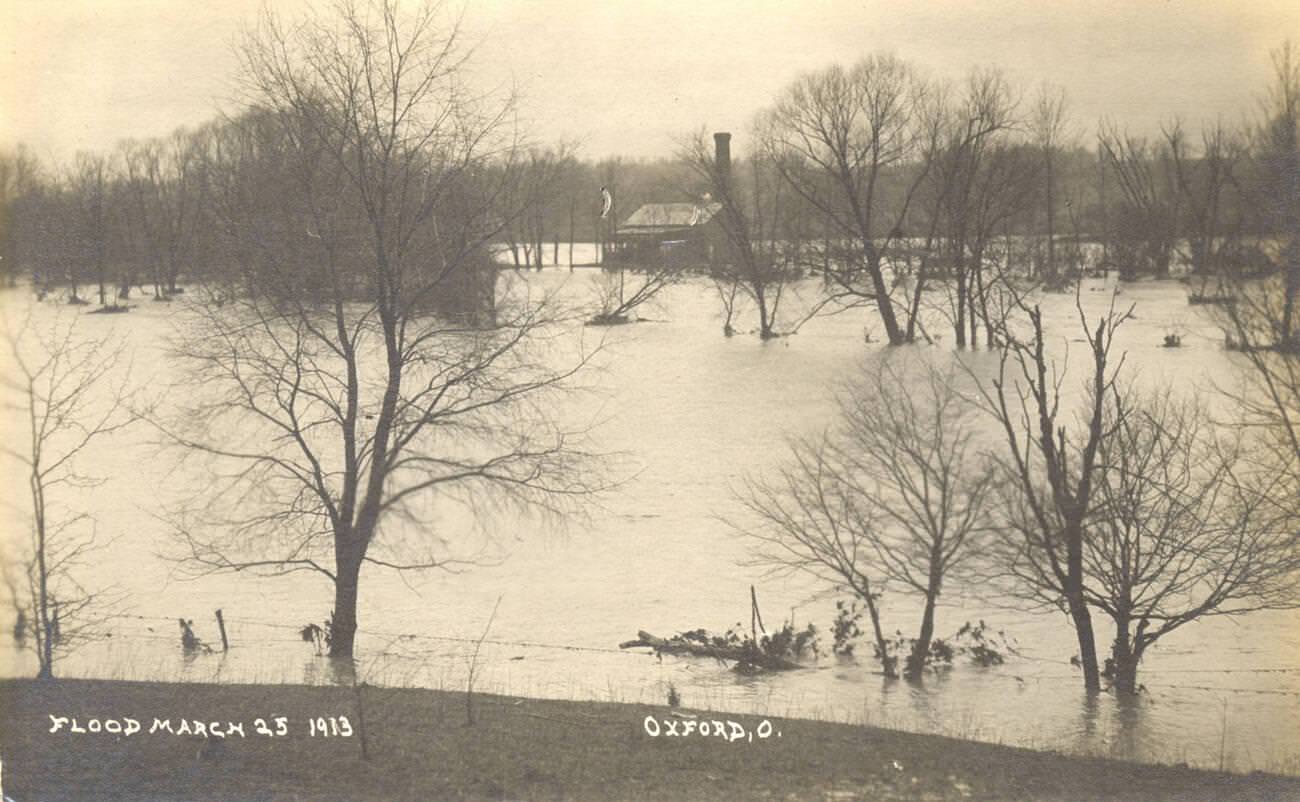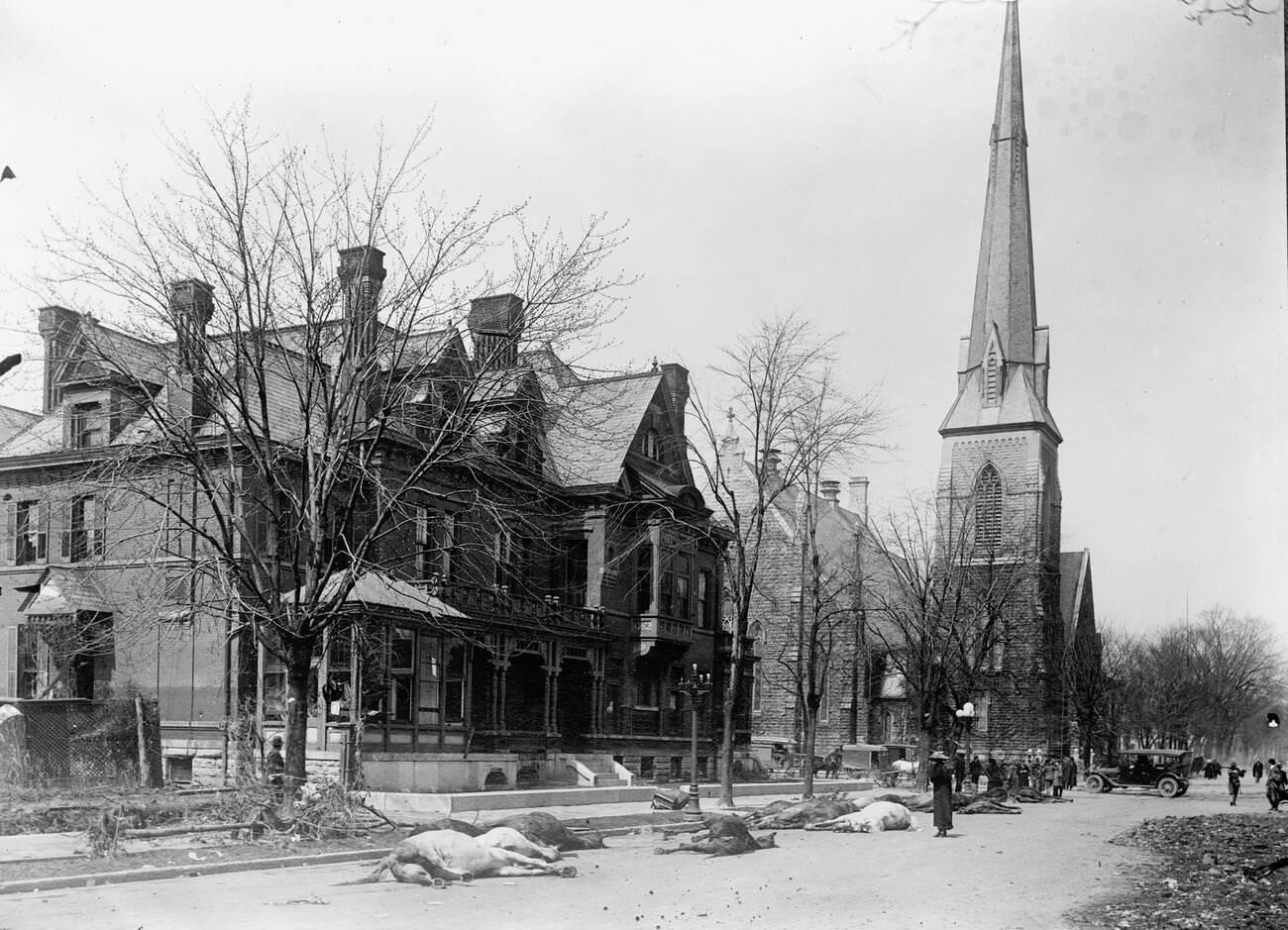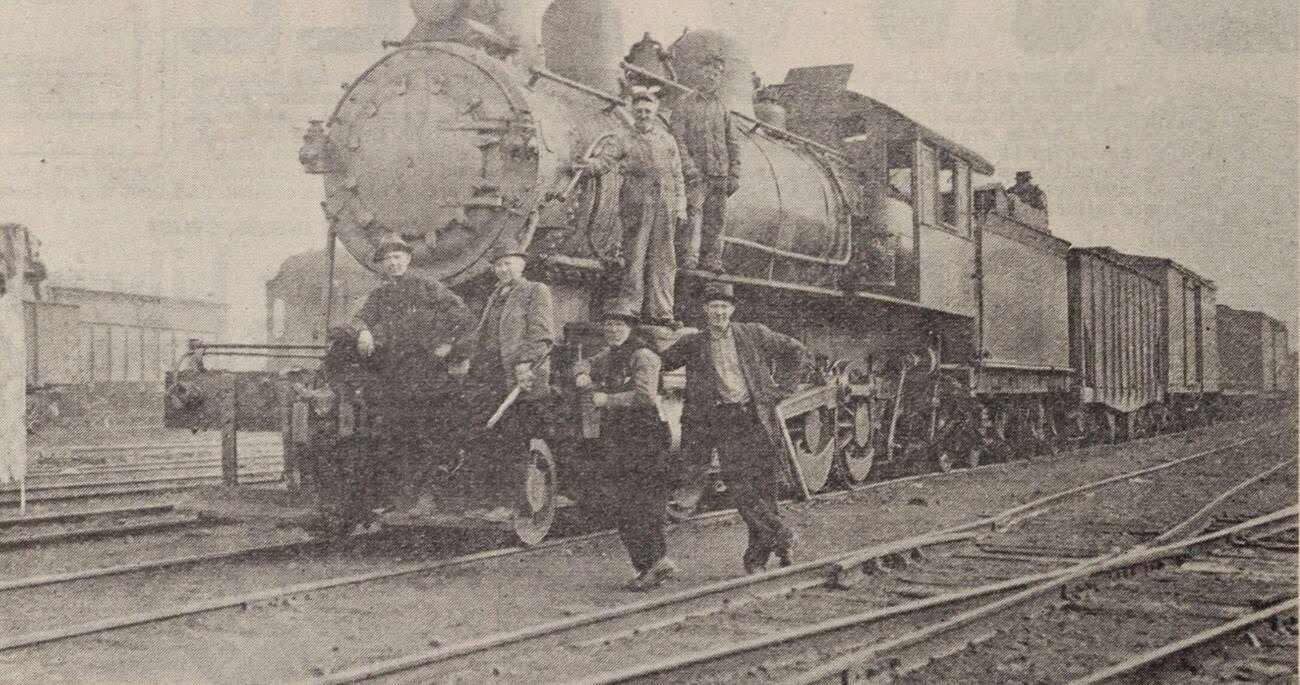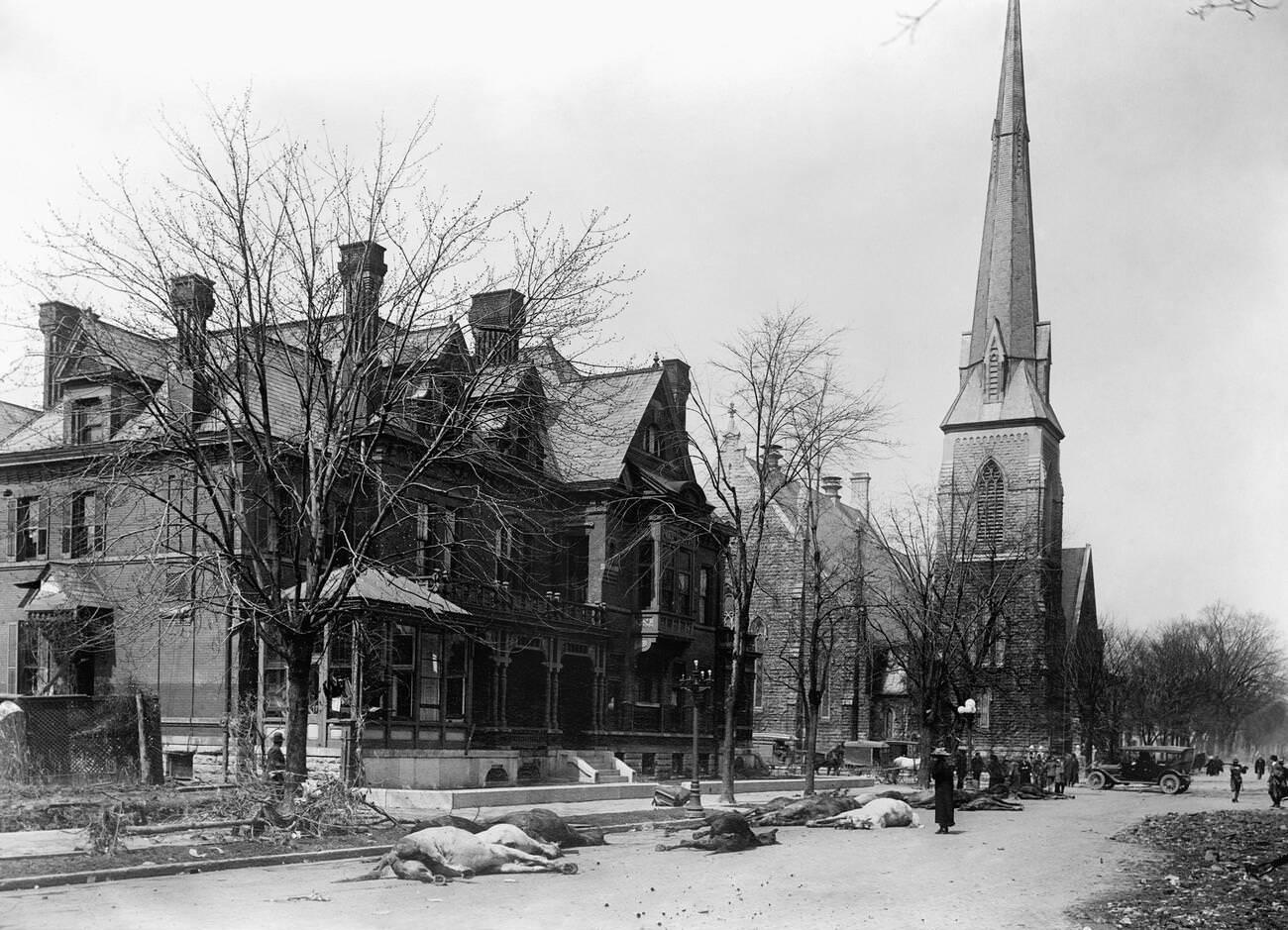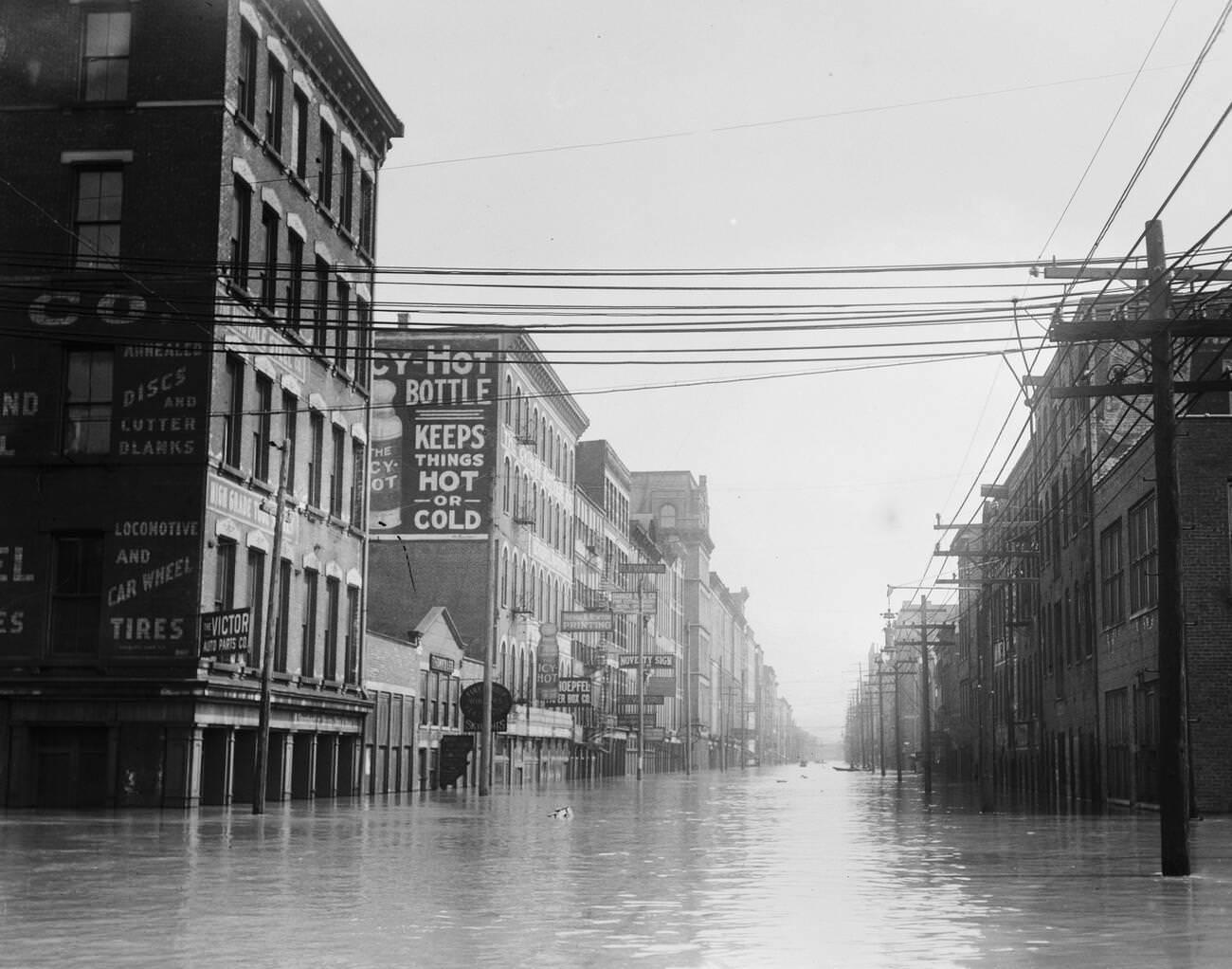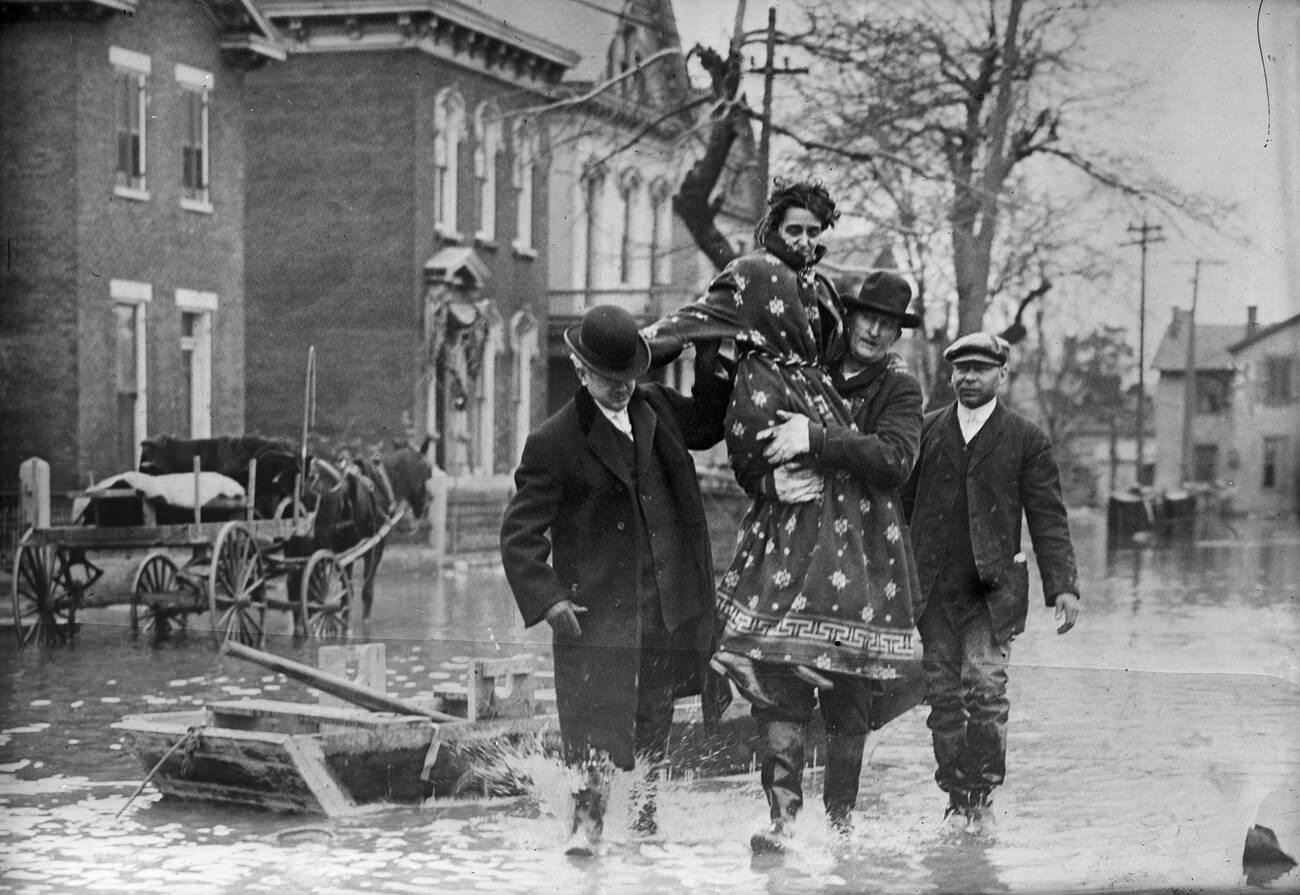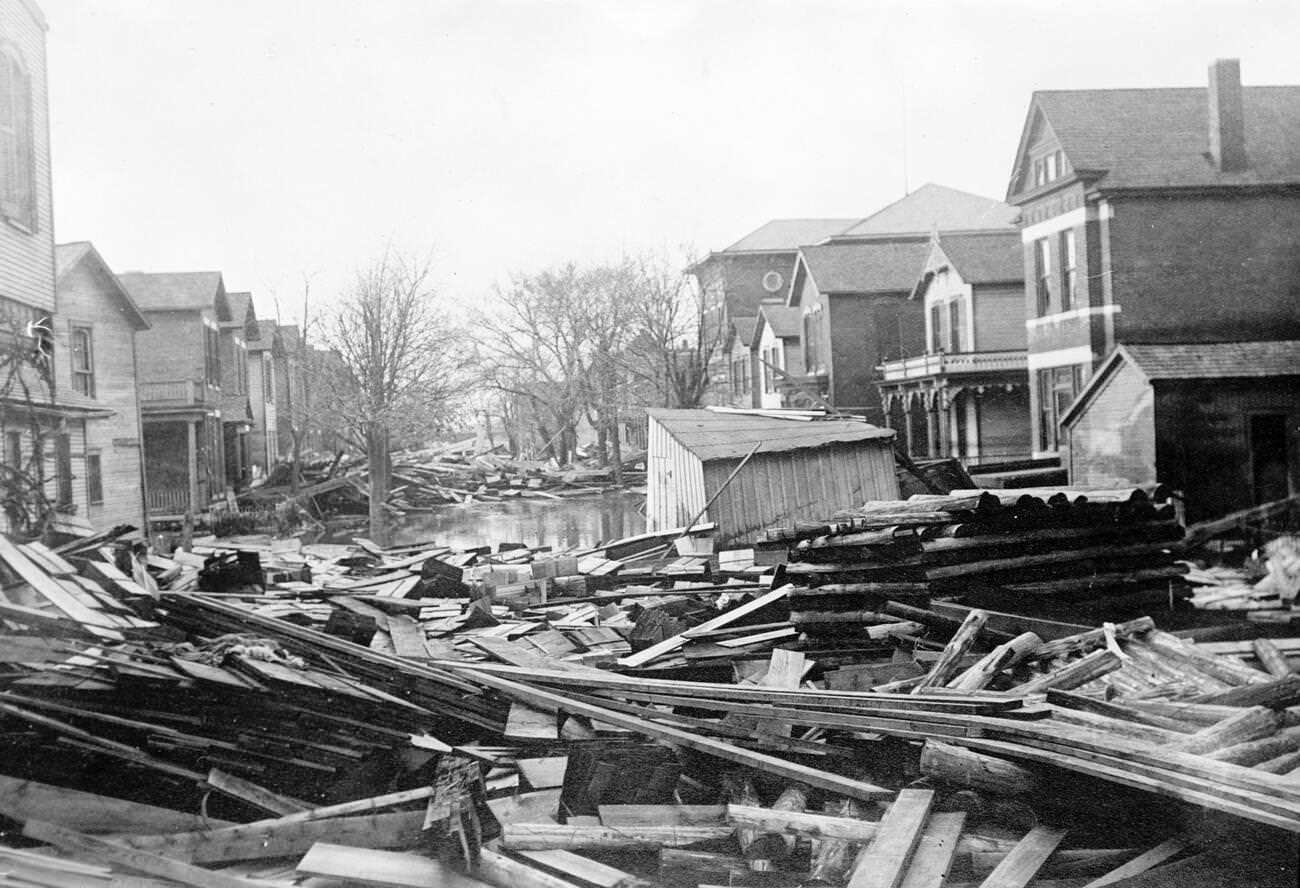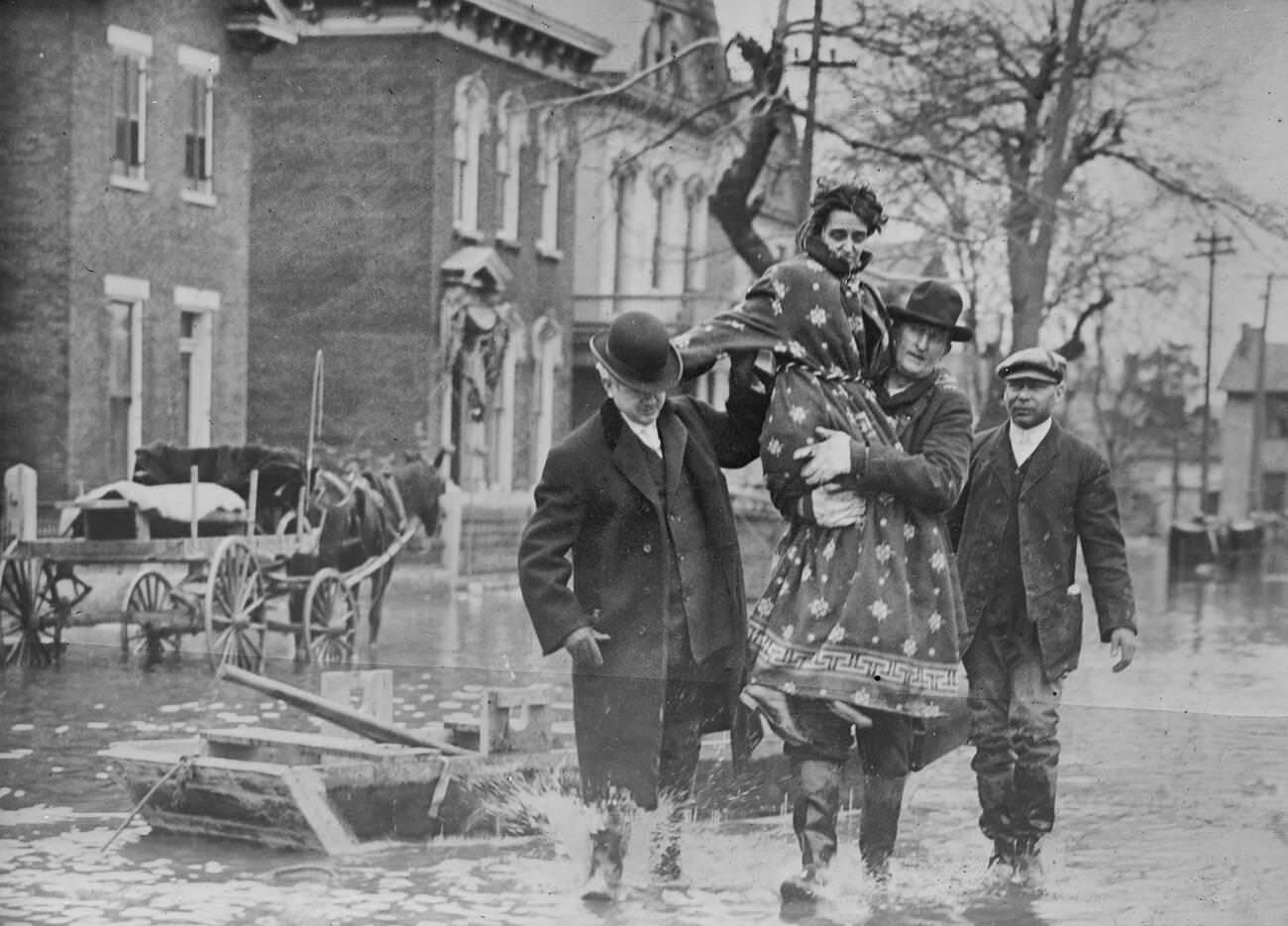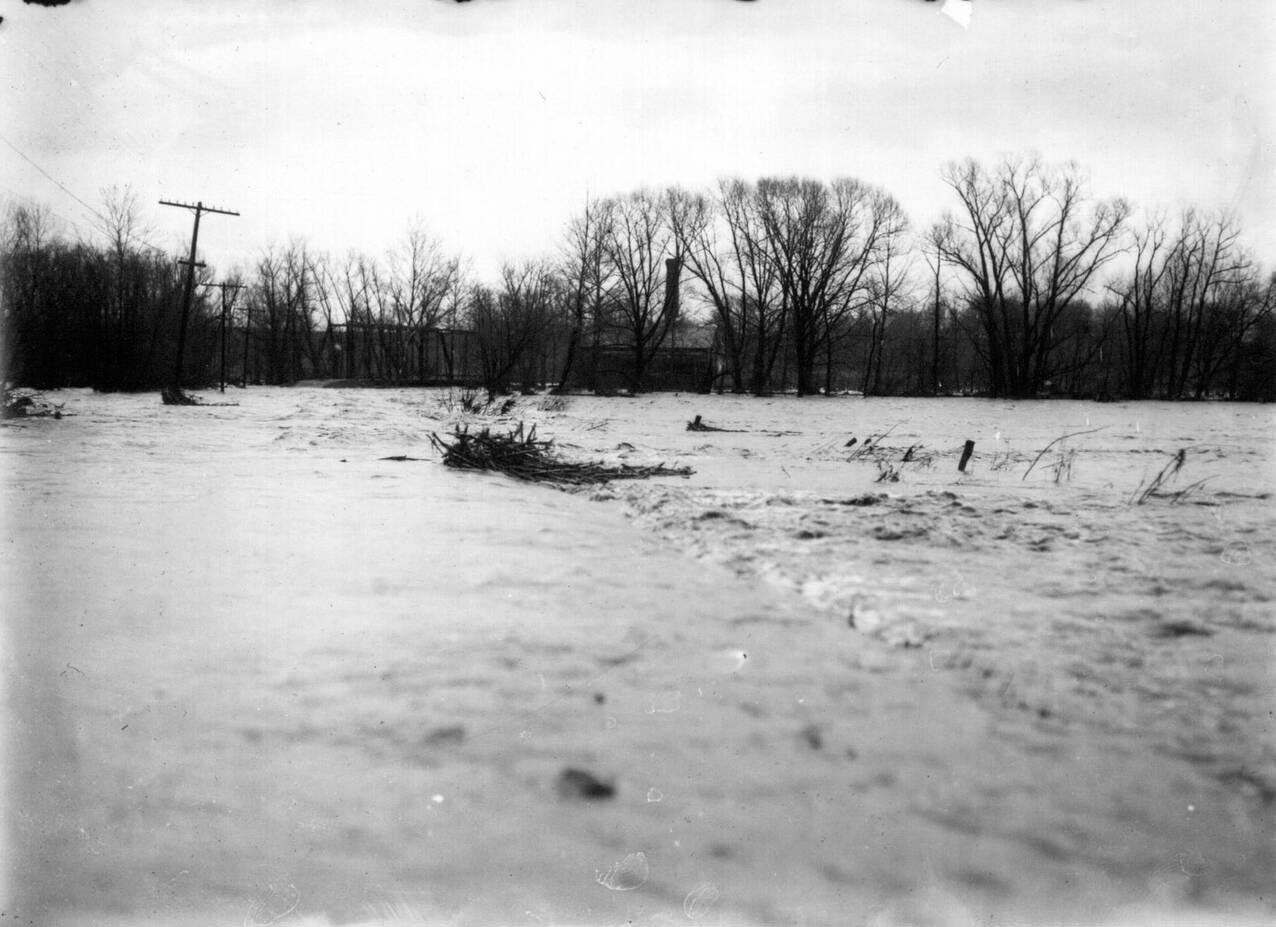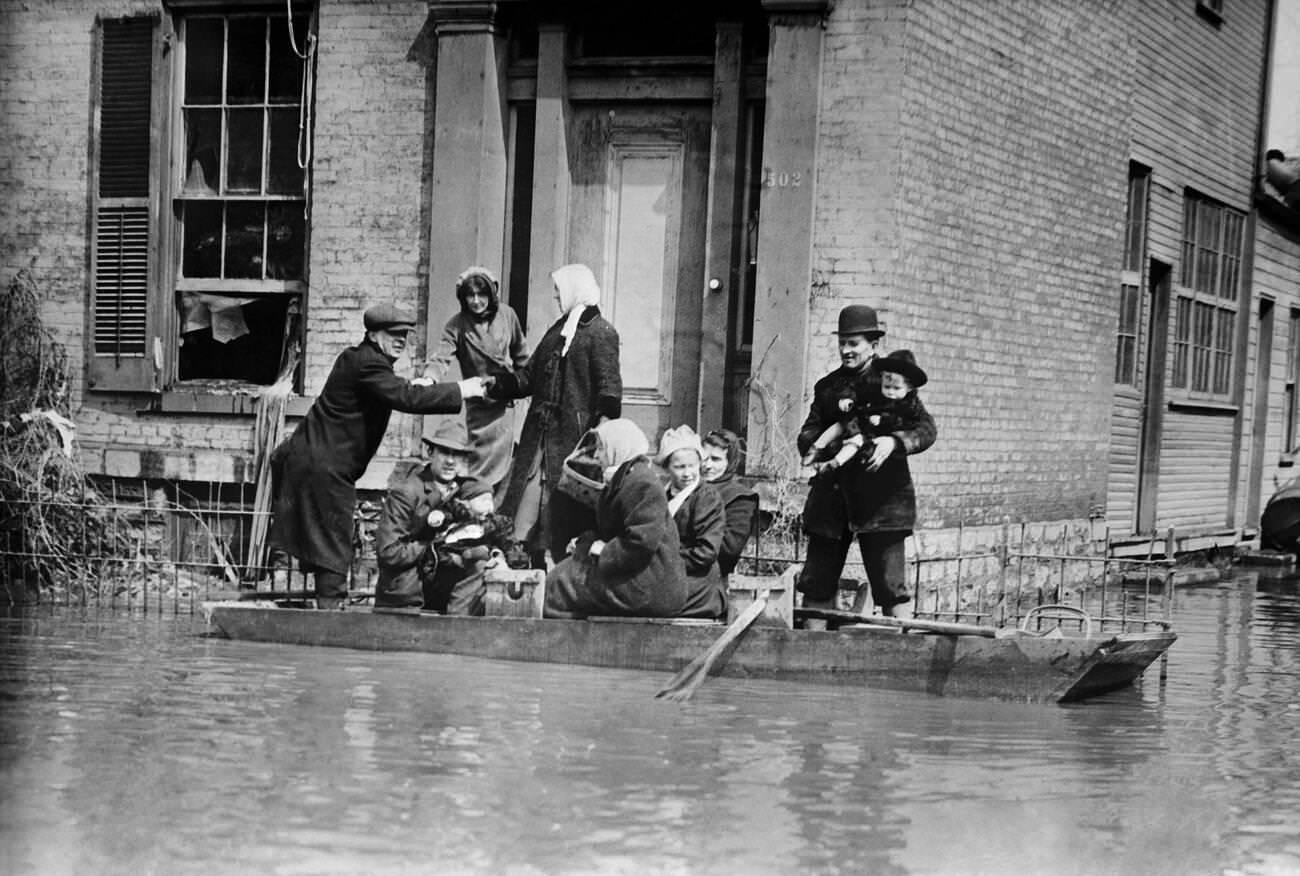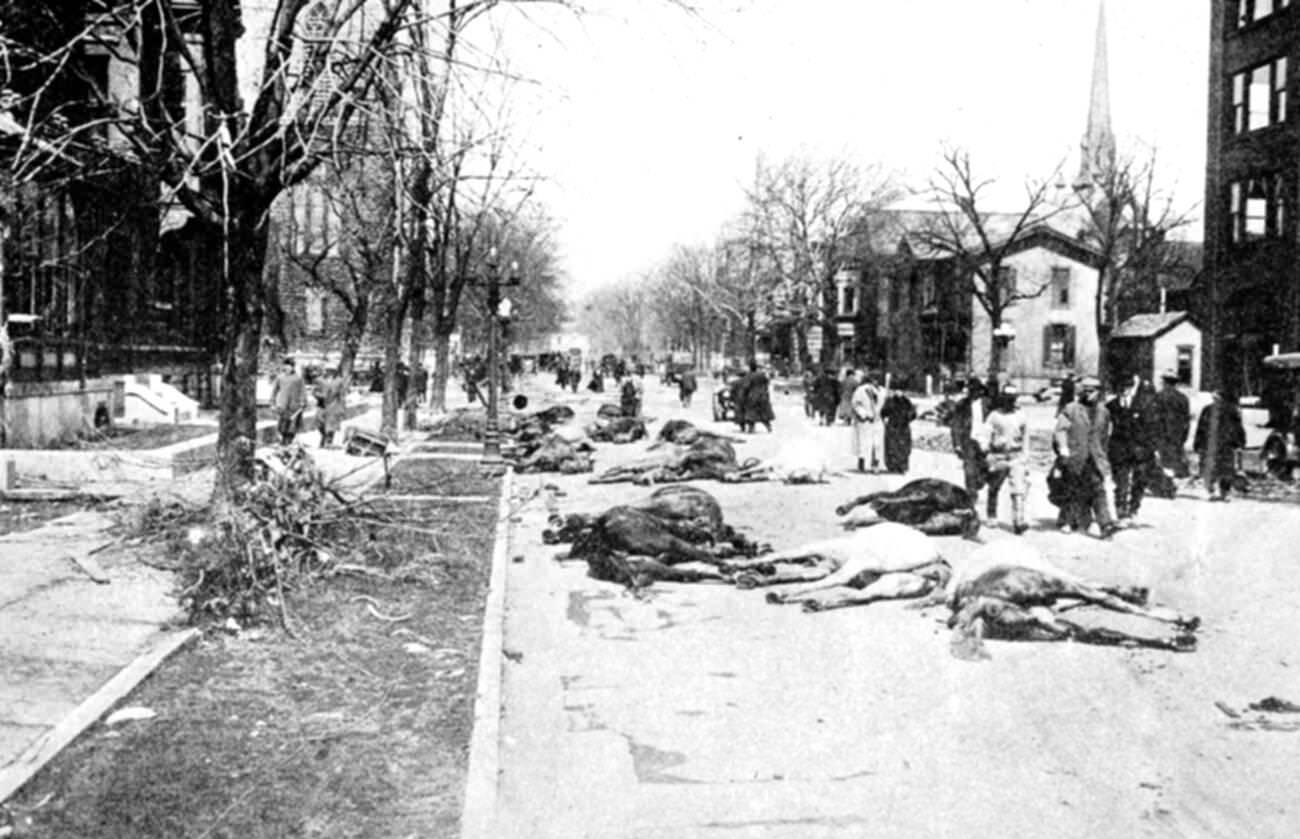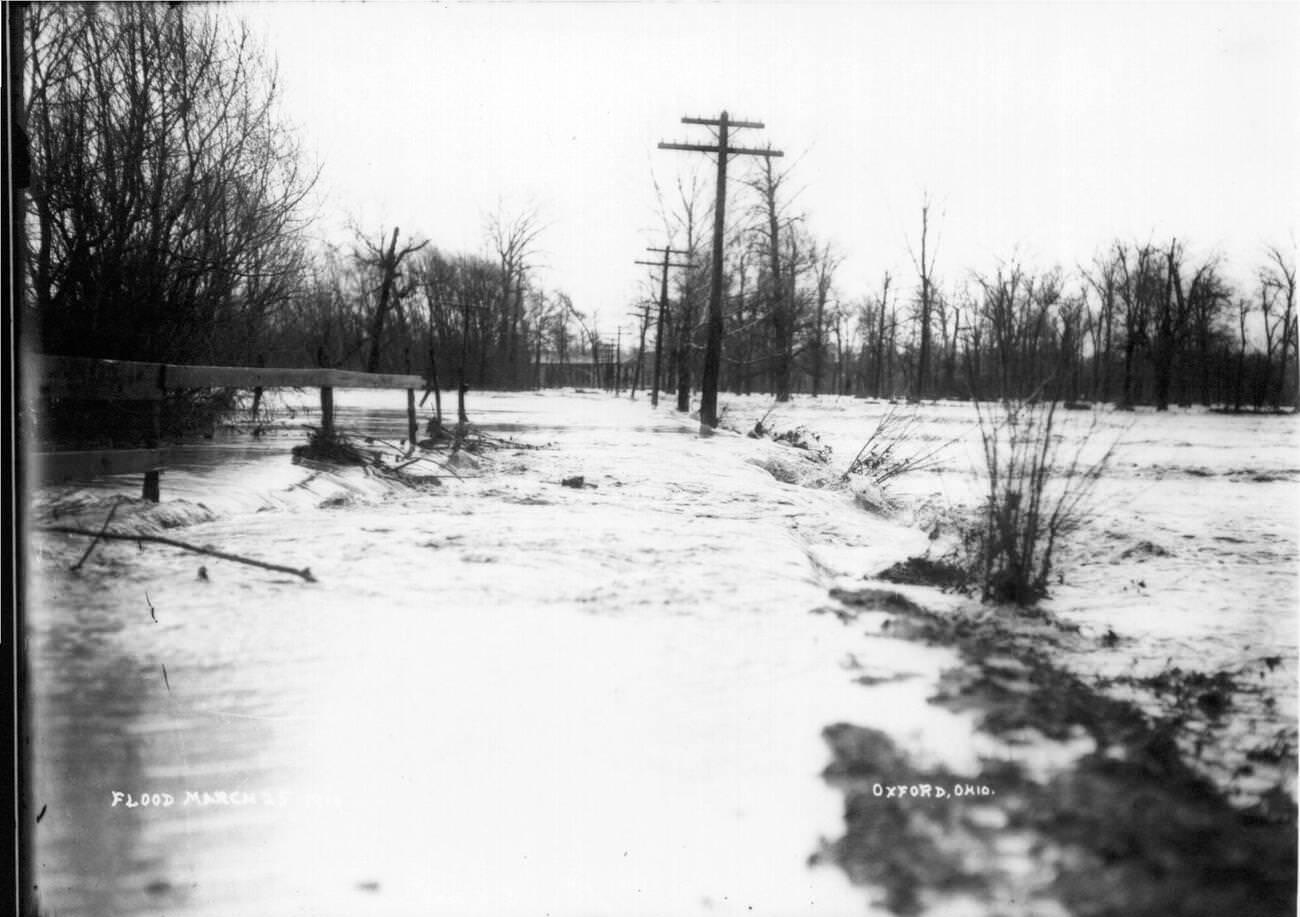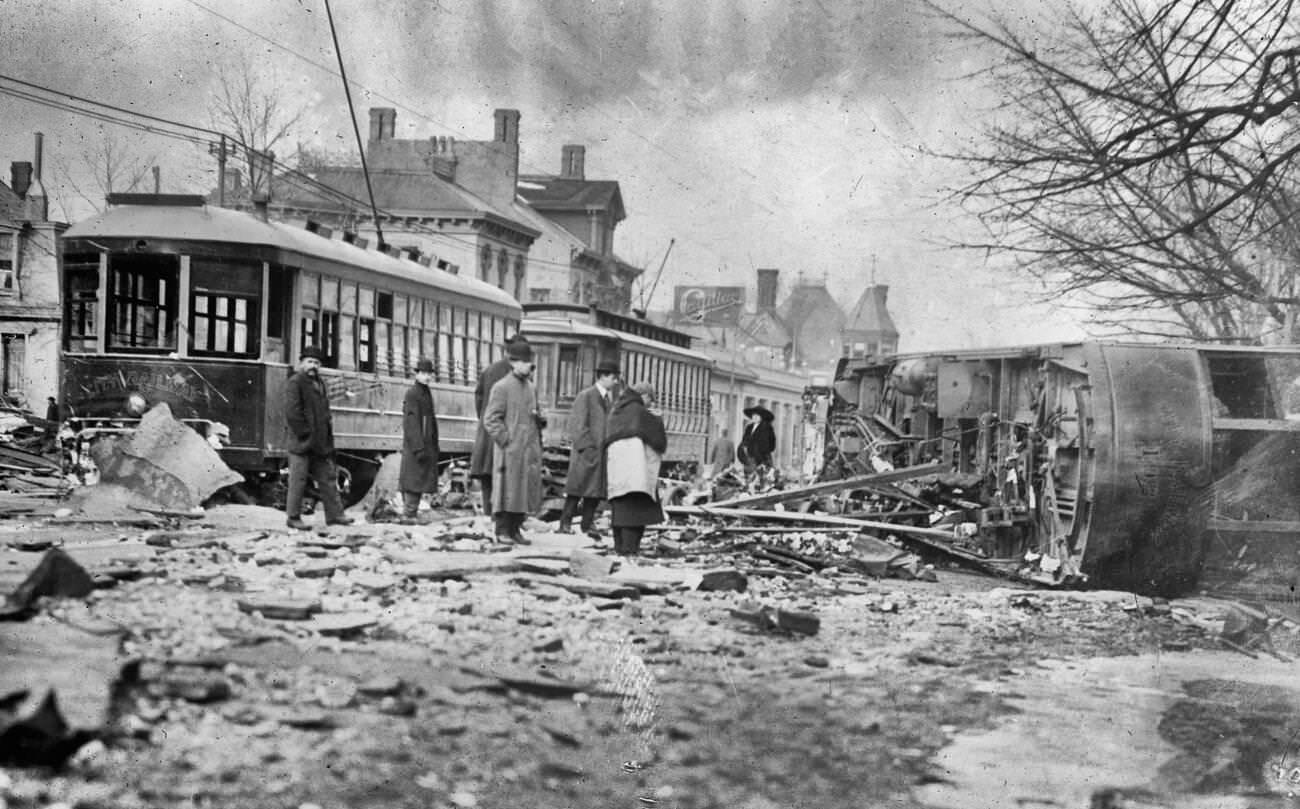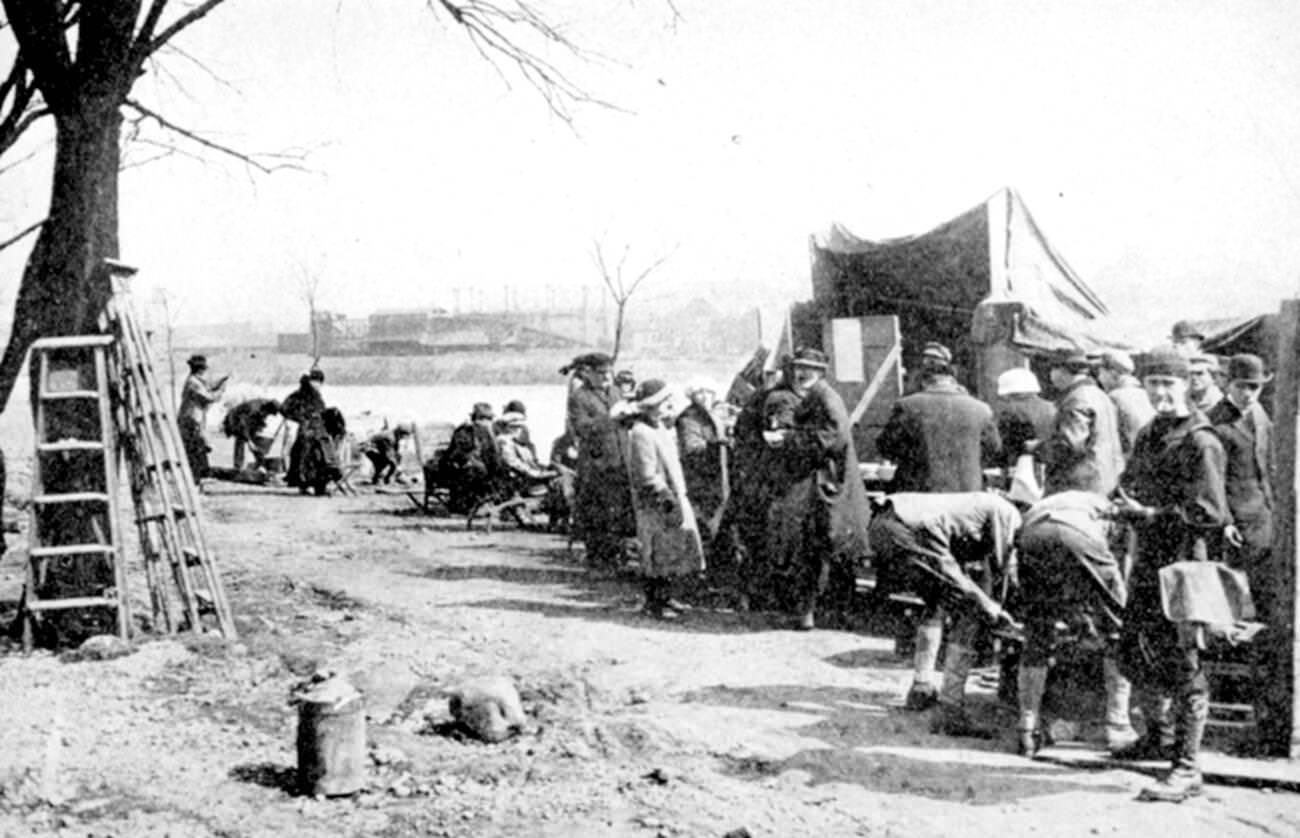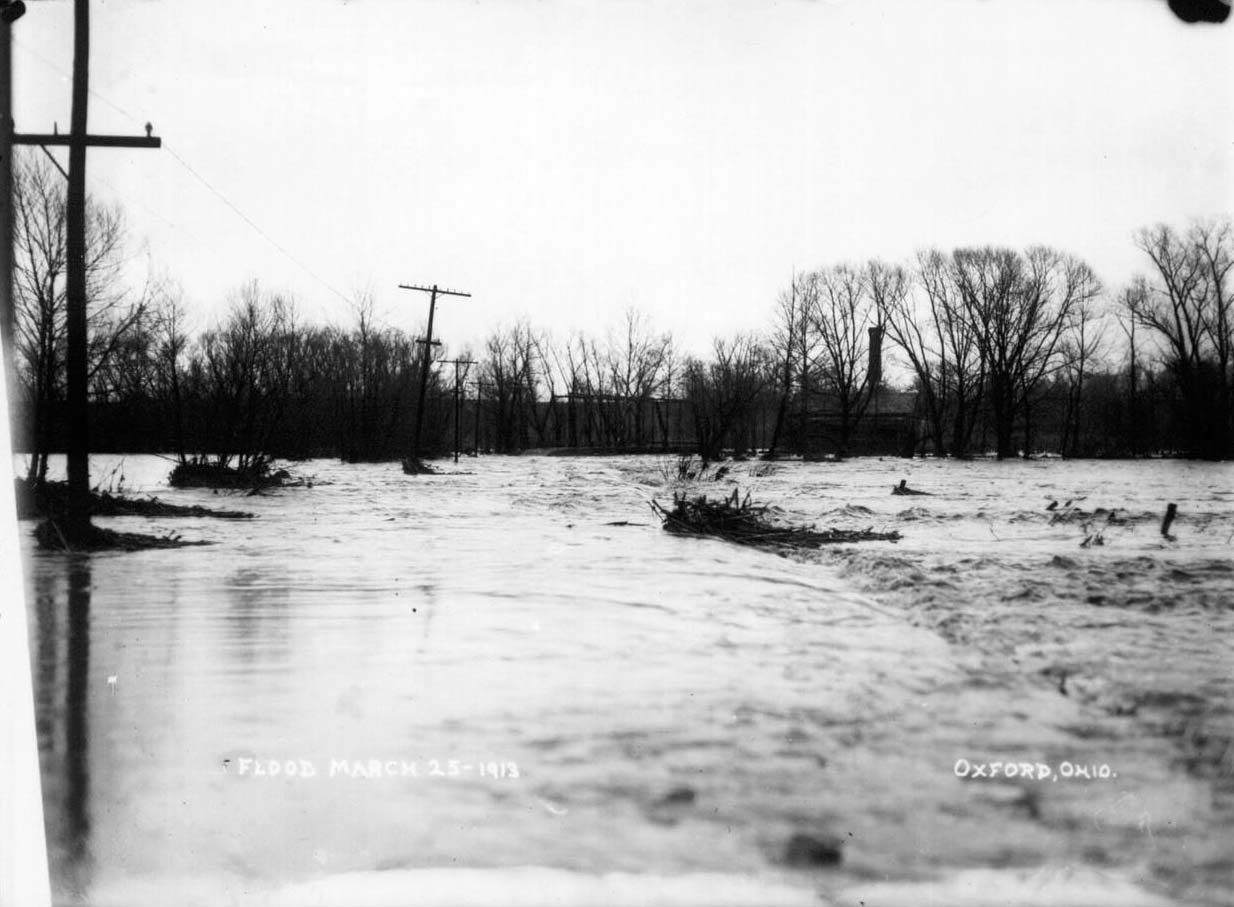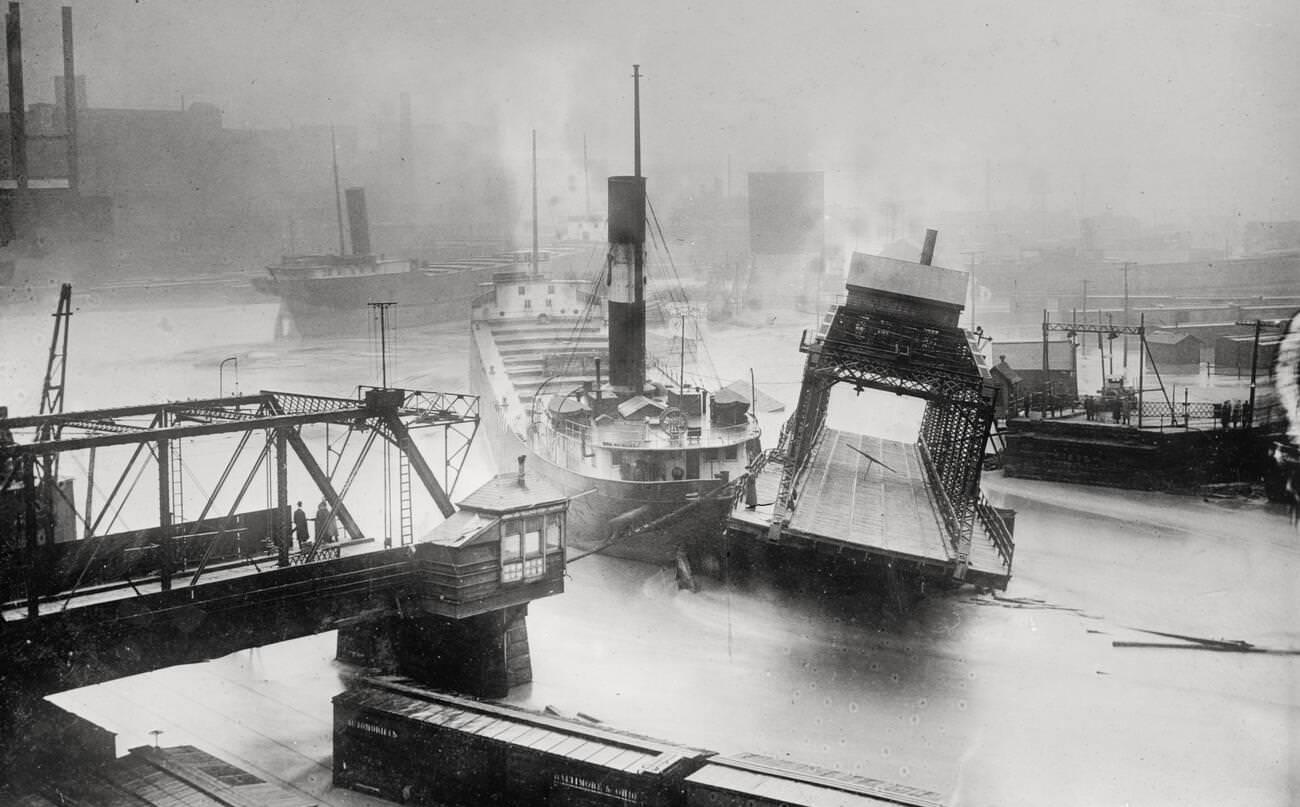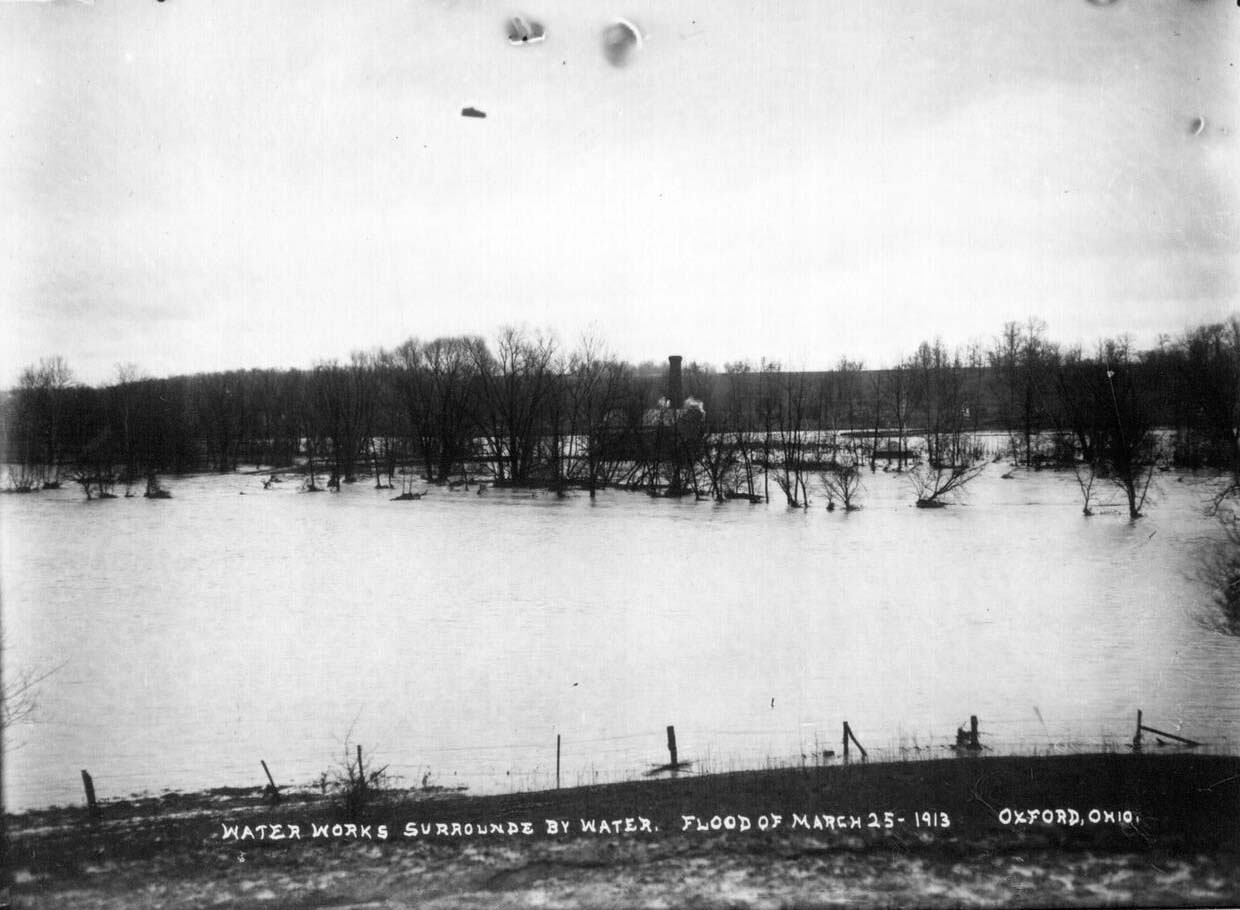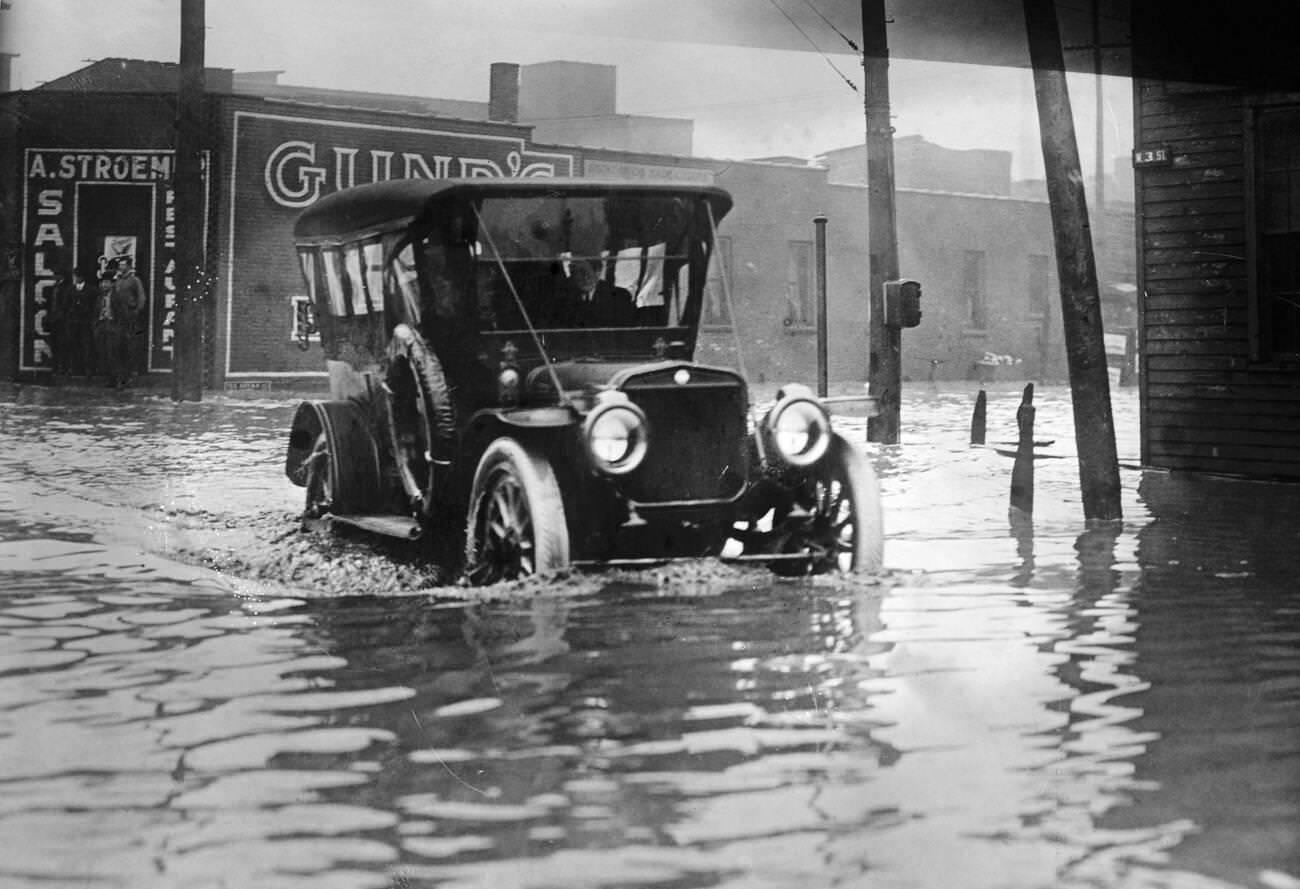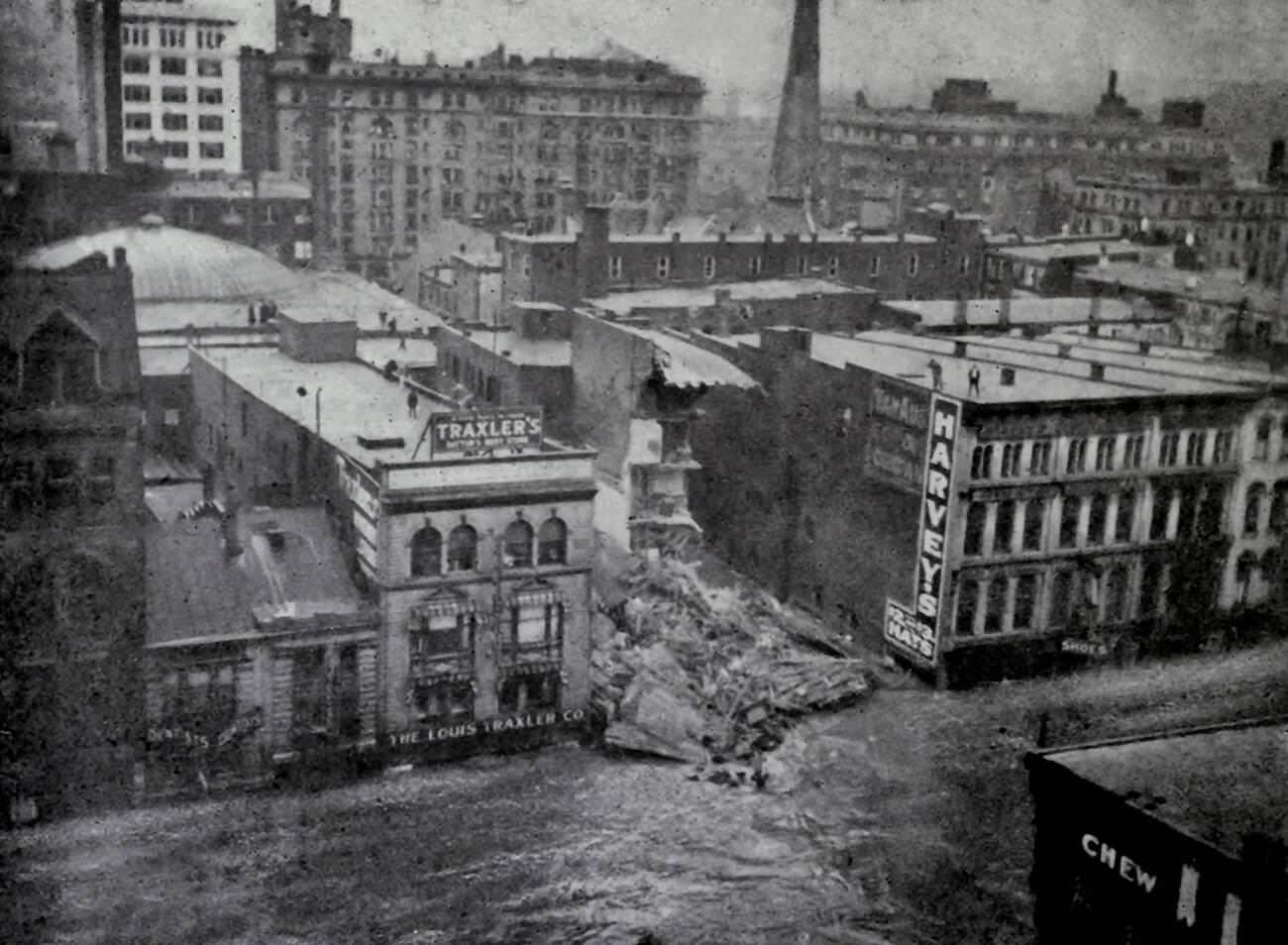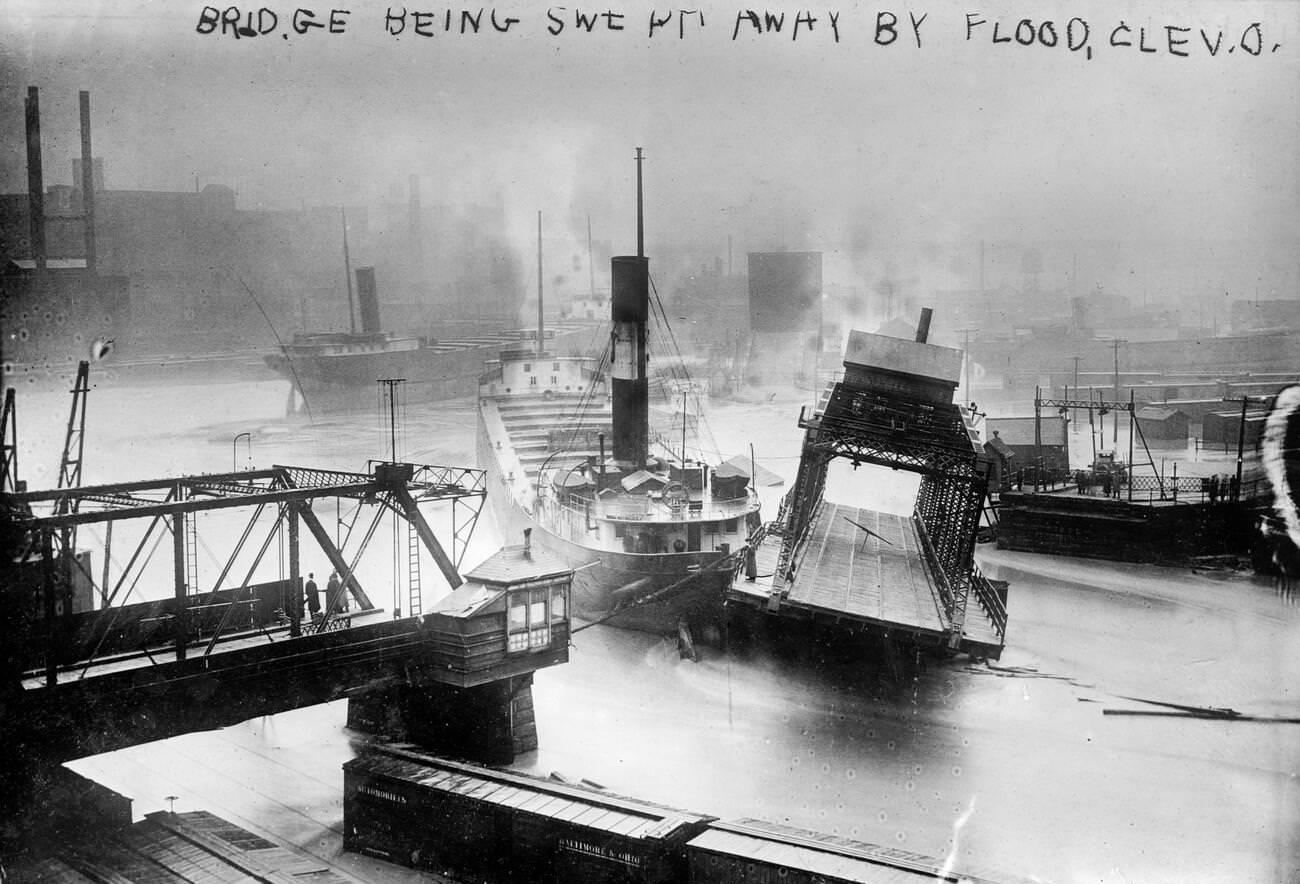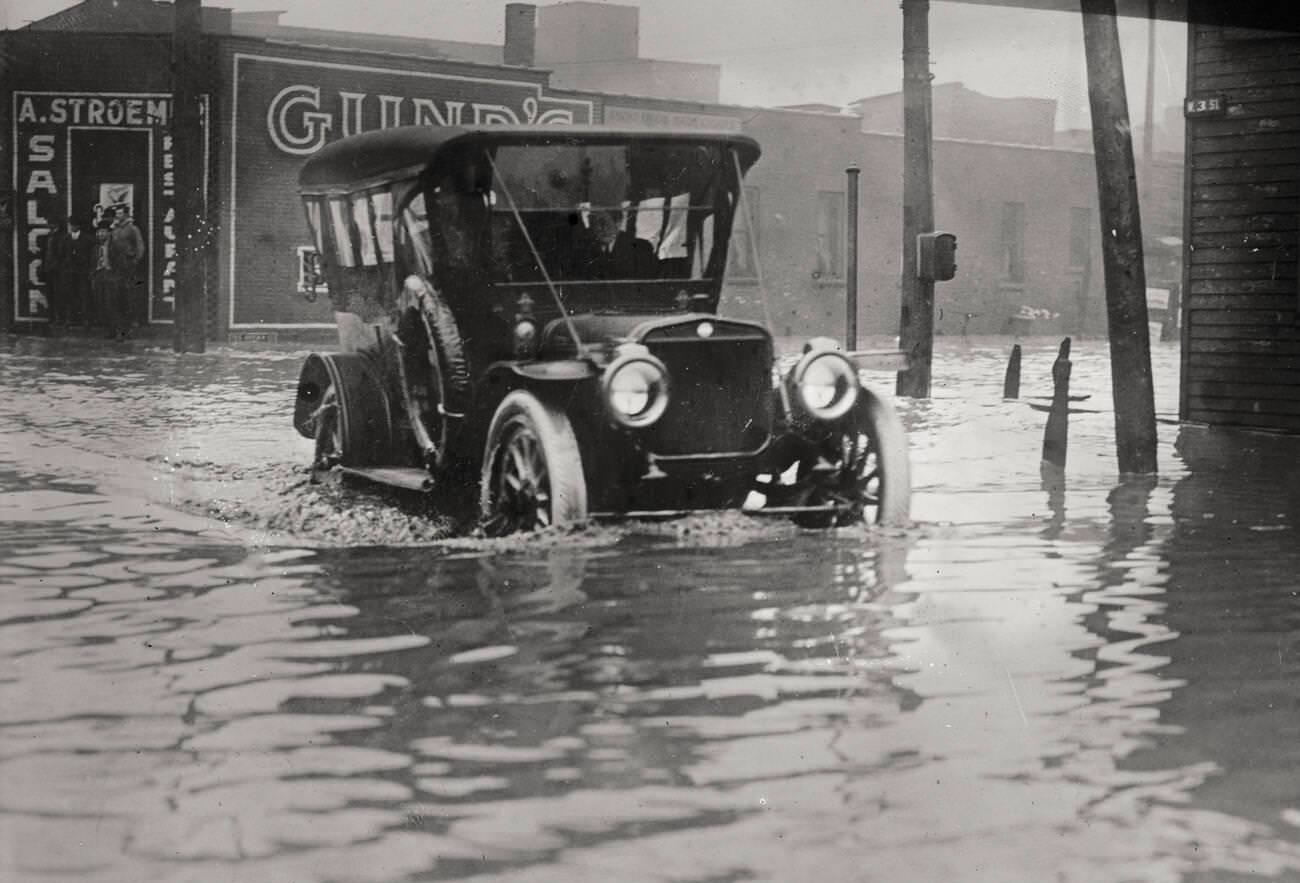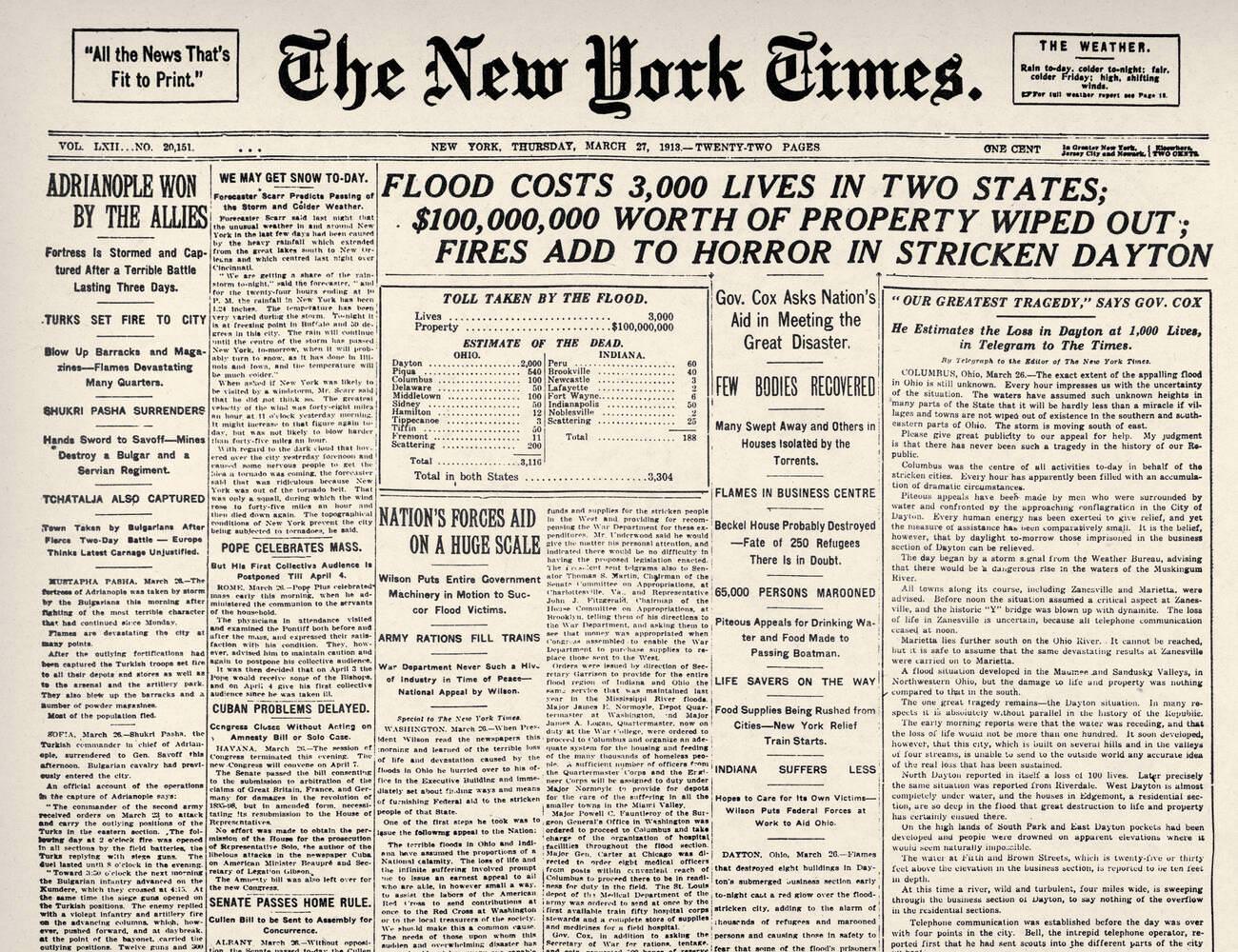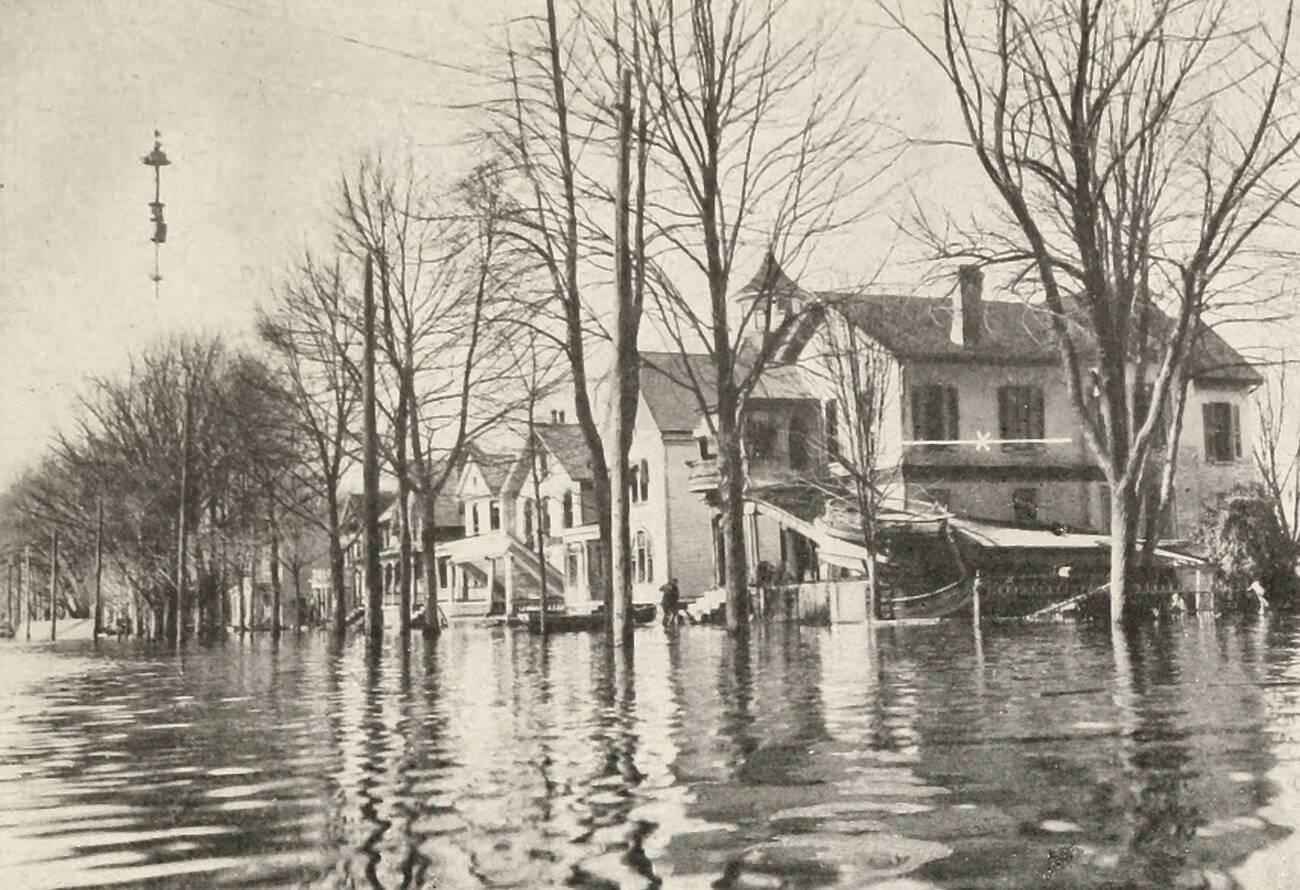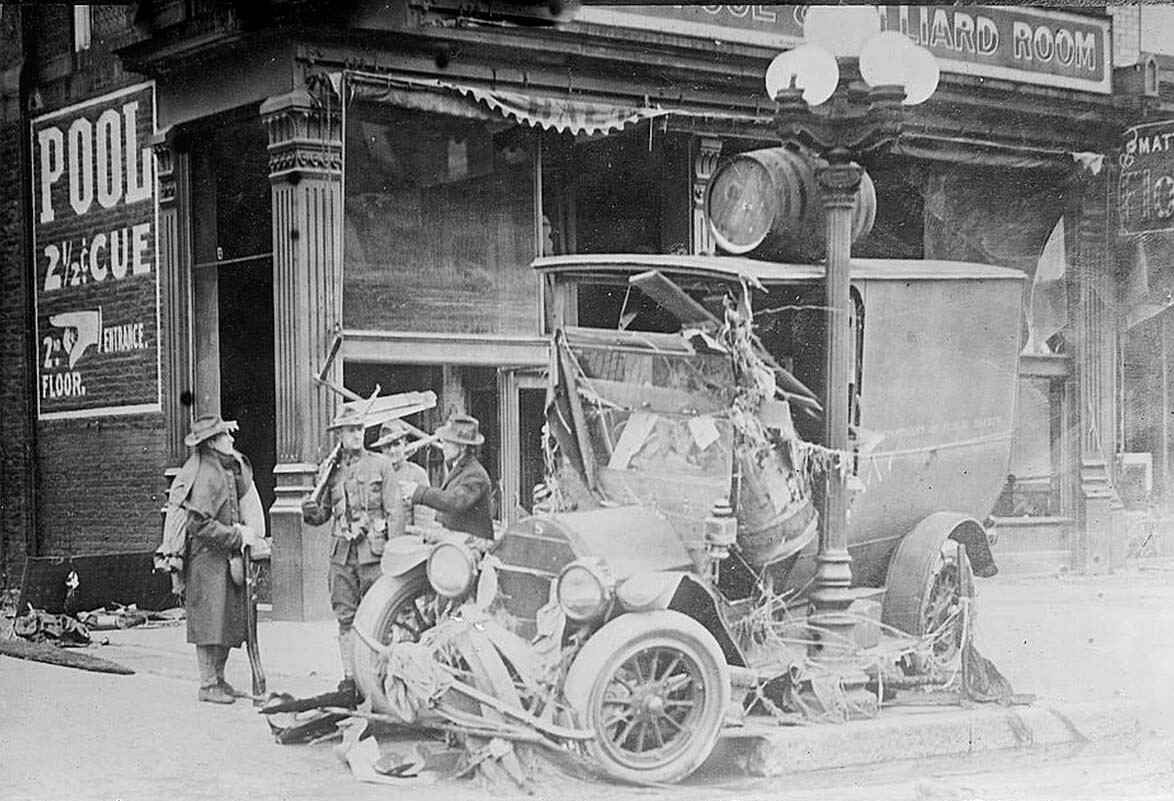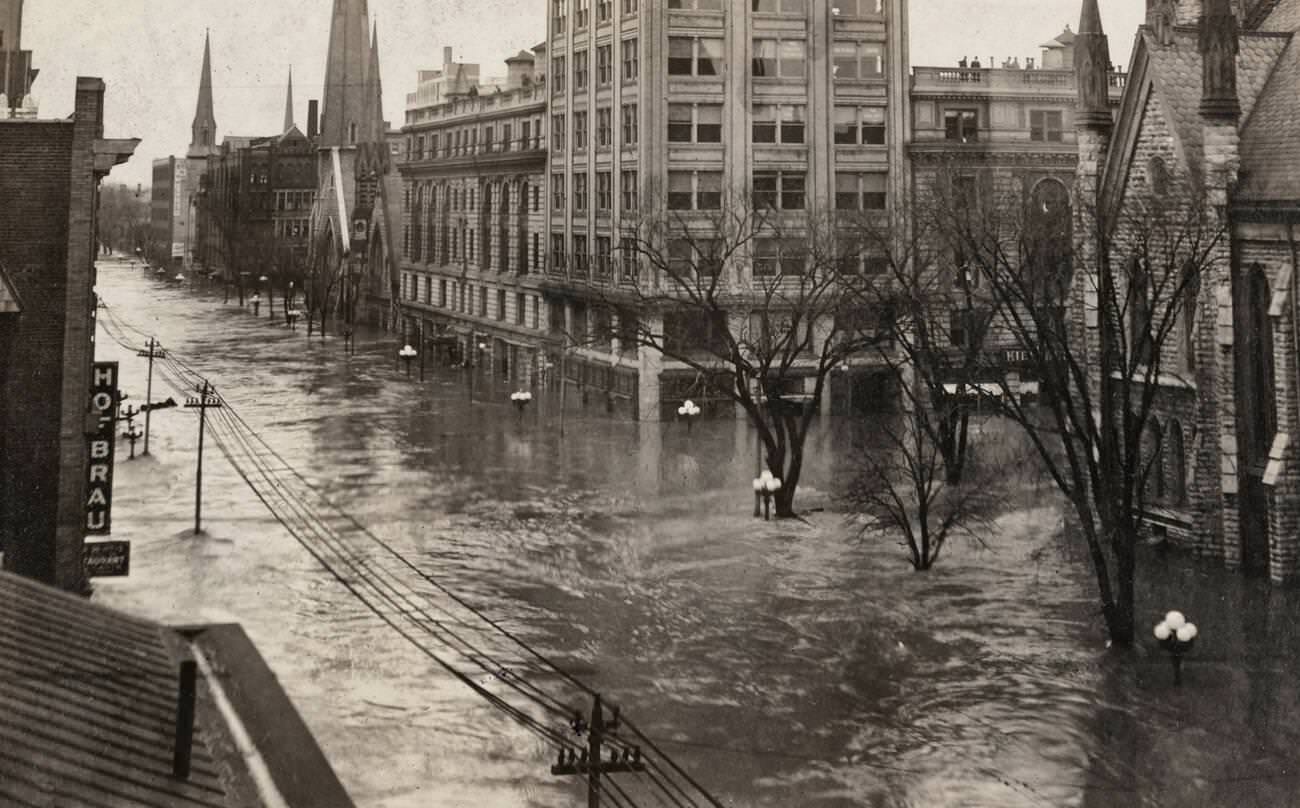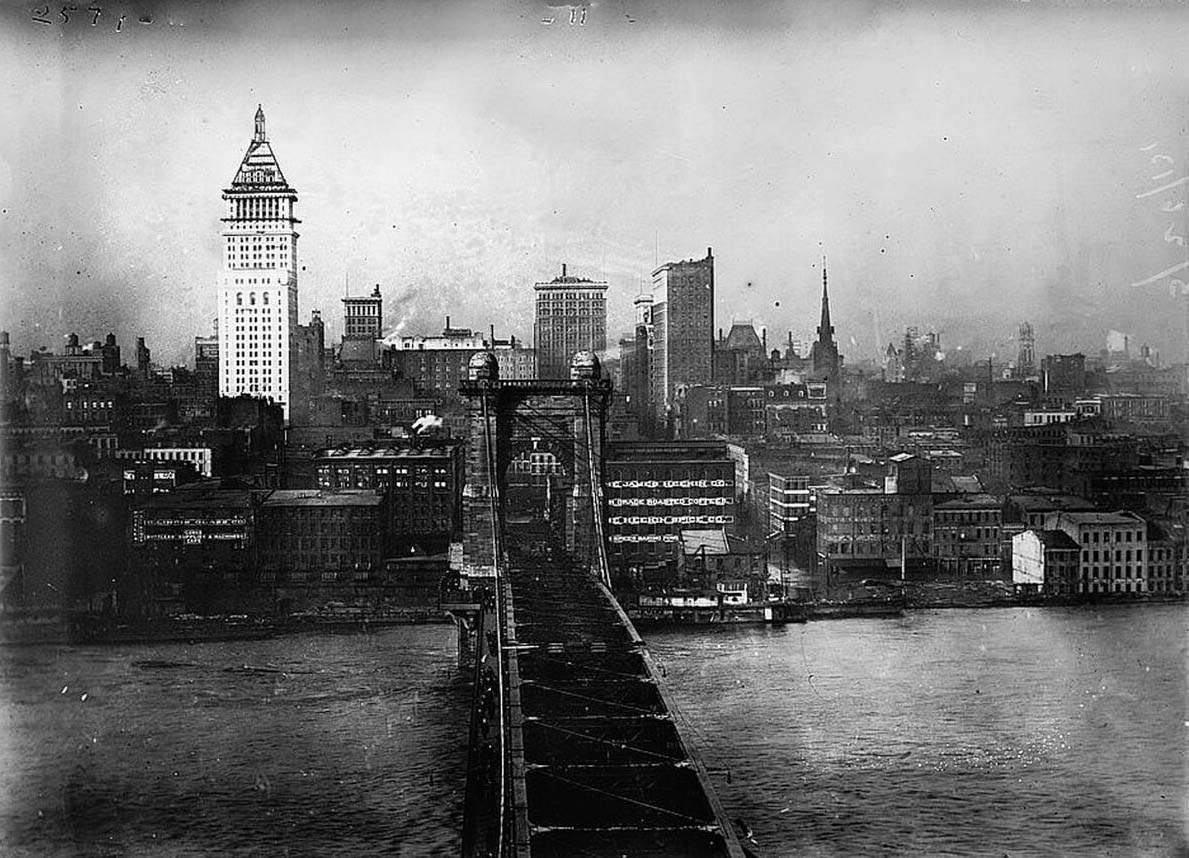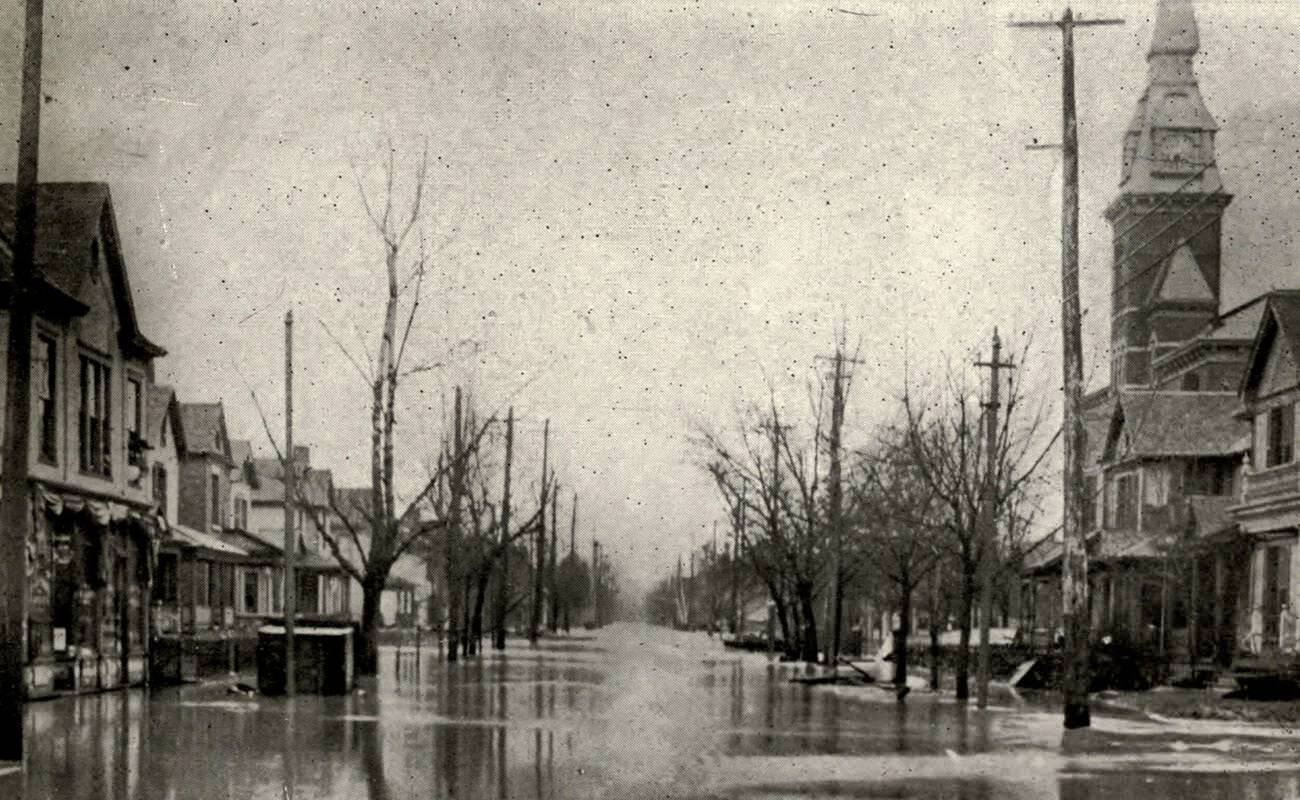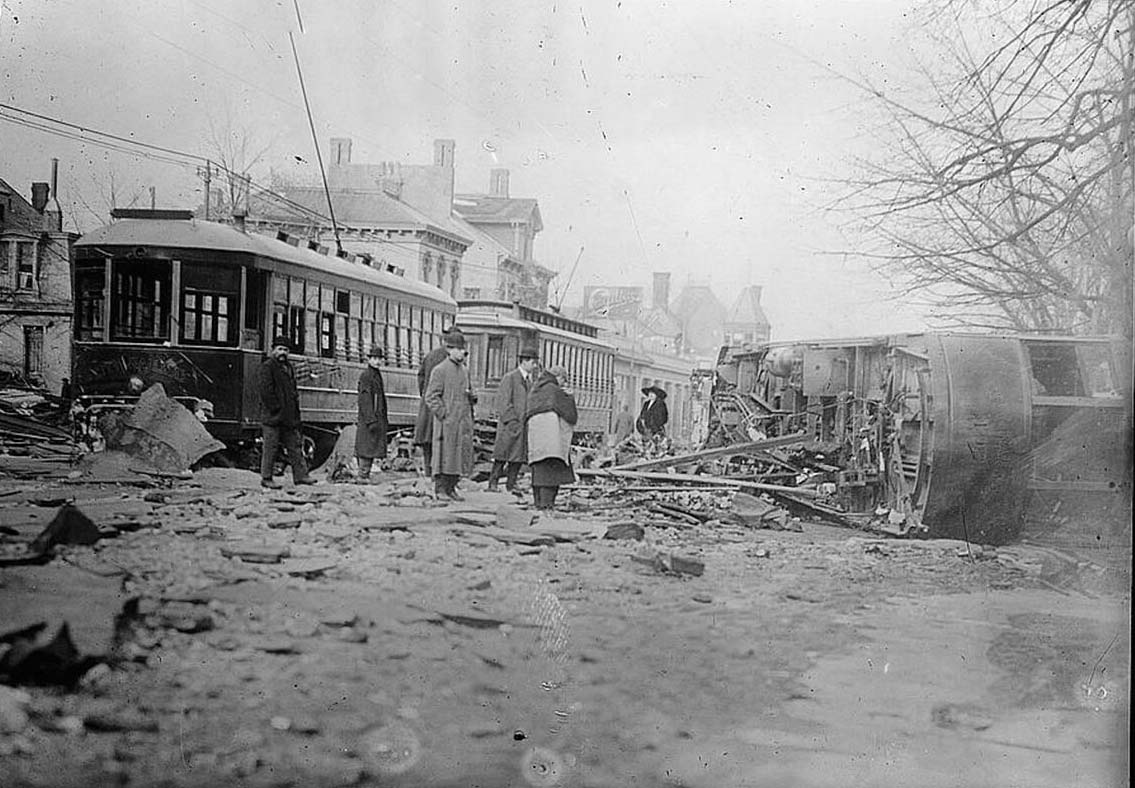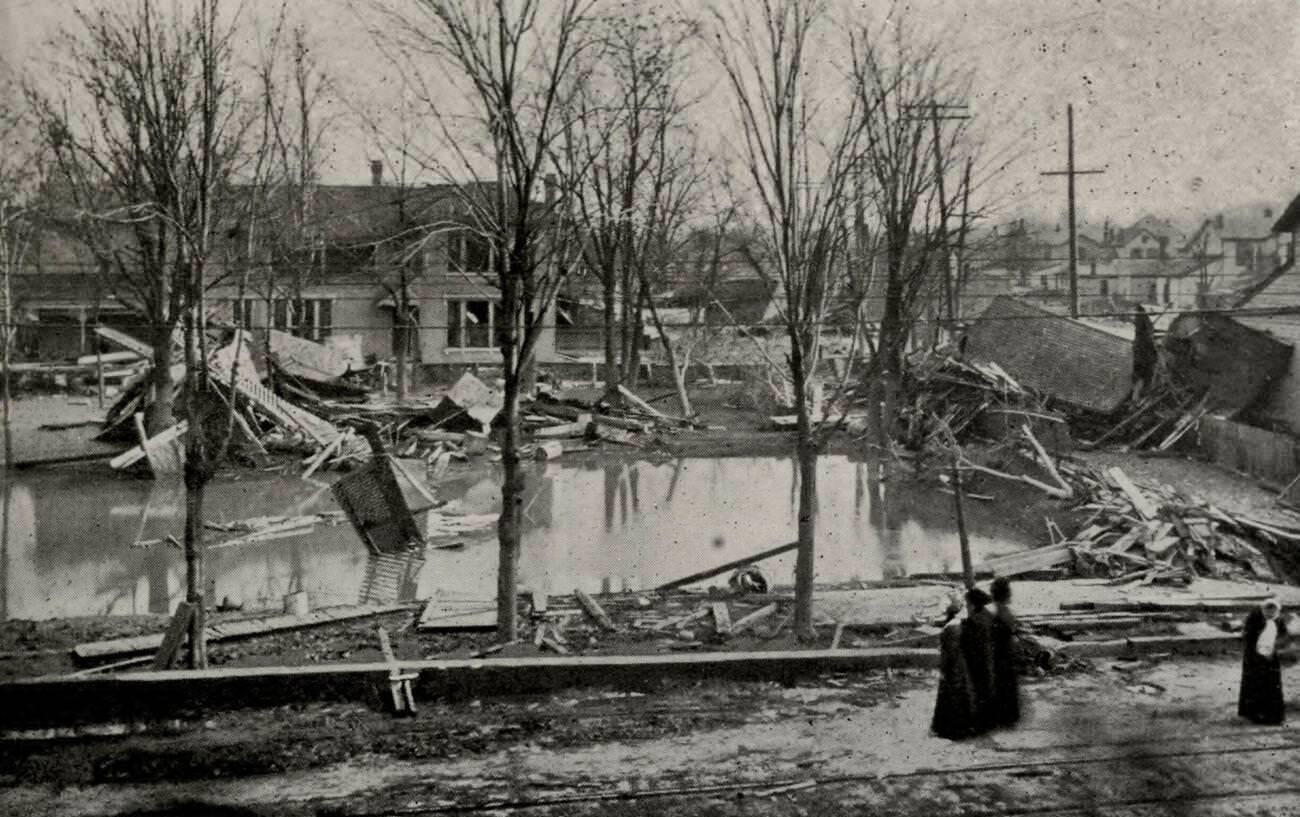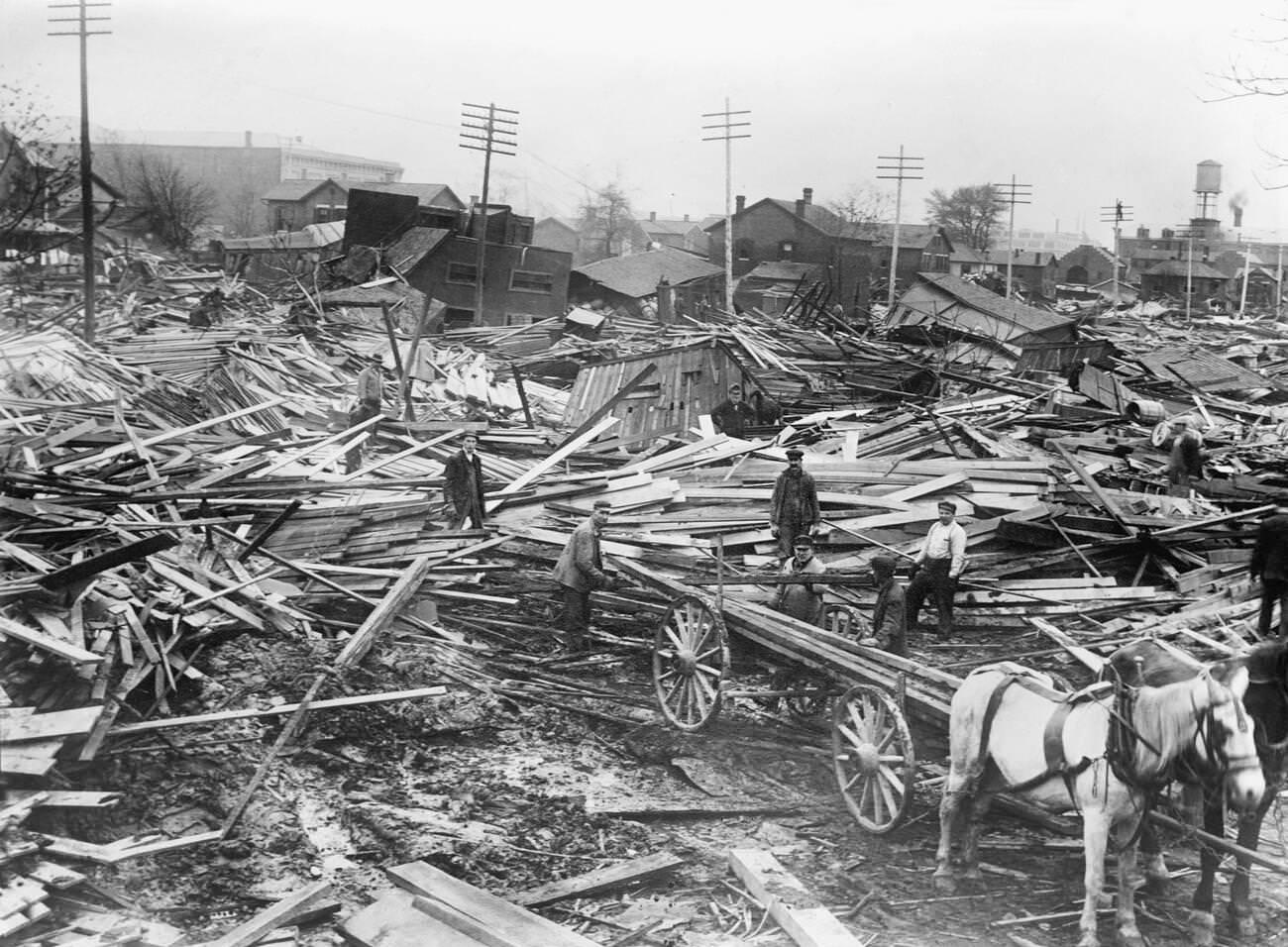Today, we will dive deep into one of Ohio’s most catastrophic events – the Great Flood of 1913. This natural disaster ravaged numerous communities across the state, resulting in significant loss of life and property. But amid the tragedy, there were also inspiring stories of heroism and resilience.
Between March 23 and 27, 1913, intense storms swept across the Midwest, causing torrential rainfall and widespread flooding. In Ohio, the floodwaters rose rapidly, inundating cities and towns along the Miami, Scioto, Muskingum, and other rivers. The devastation was unprecedented, with cities like Dayton, Columbus, and Massillon experiencing some of the worst flooding in their history.
The winter had been unusually snowy, leaving the ground saturated and unable to absorb the torrential rains that fell in late March. Moreover, the storms that swept across the Midwest were particularly intense, with some areas receiving as much as 6 to 11 inches of rainfall in just a few days. These factors caused rivers and tributaries to swell rapidly, leading to widespread flooding.
Weather forecasting limitations
In 1913, weather forecasting technology was still in its infancy. While some warnings were issued before the floods, they were generally vague and failed to communicate the severity of the impending disaster. The lack of accurate and timely information hampered the public’s ability to prepare for the floods and the following emergency response efforts.
Casualties
The death toll from the Great Flood of 1913 in Ohio was estimated to be around 470 people. Many who lost their lives were trapped in their homes, unable to escape the swiftly rising waters. The tragedy highlighted the vulnerability of communities to the destructive power of nature, even in the face of advanced warning systems and emergency response efforts.
Property damage
The flood caused extensive damage to Ohio’s homes, businesses, and infrastructure. Buildings were either submerged or swept away, bridges were destroyed or severely damaged, and communication lines were severed. The estimated cost of the damage was an astonishing $100 million (equivalent to over $2.6 billion today), making it one of the costliest natural disasters in U.S. history at the time.
Resilience and recovery
Despite the widespread devastation, the Great Flood of 1913 also gave rise to countless stories of heroism and selflessness. Ordinary citizens, police officers, firefighters, and members of the National Guard worked tirelessly to rescue those stranded by the floodwaters, often risking their own lives. These brave individuals showcased the strength and courage of the human spirit in the face of overwhelming adversity.
In the aftermath of the flood, the people of Ohio demonstrated remarkable resilience. Communities banded together to rebuild their cities and towns, drawing on a deep well of determination and camaraderie. The recovery efforts also led to the development of new infrastructure and flood control measures, such as the Miami Conservancy District, which aimed to prevent future floods of such magnitude.


